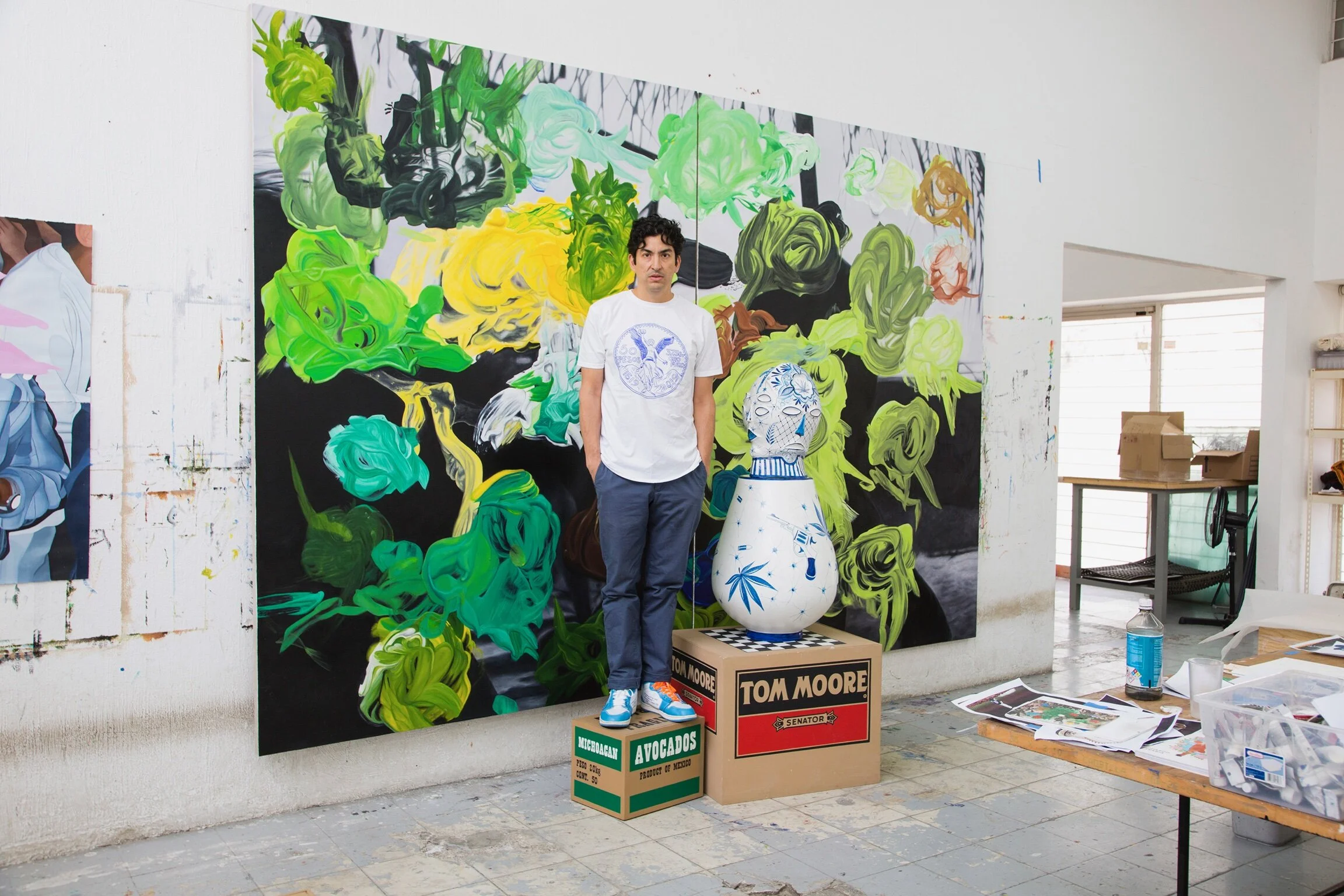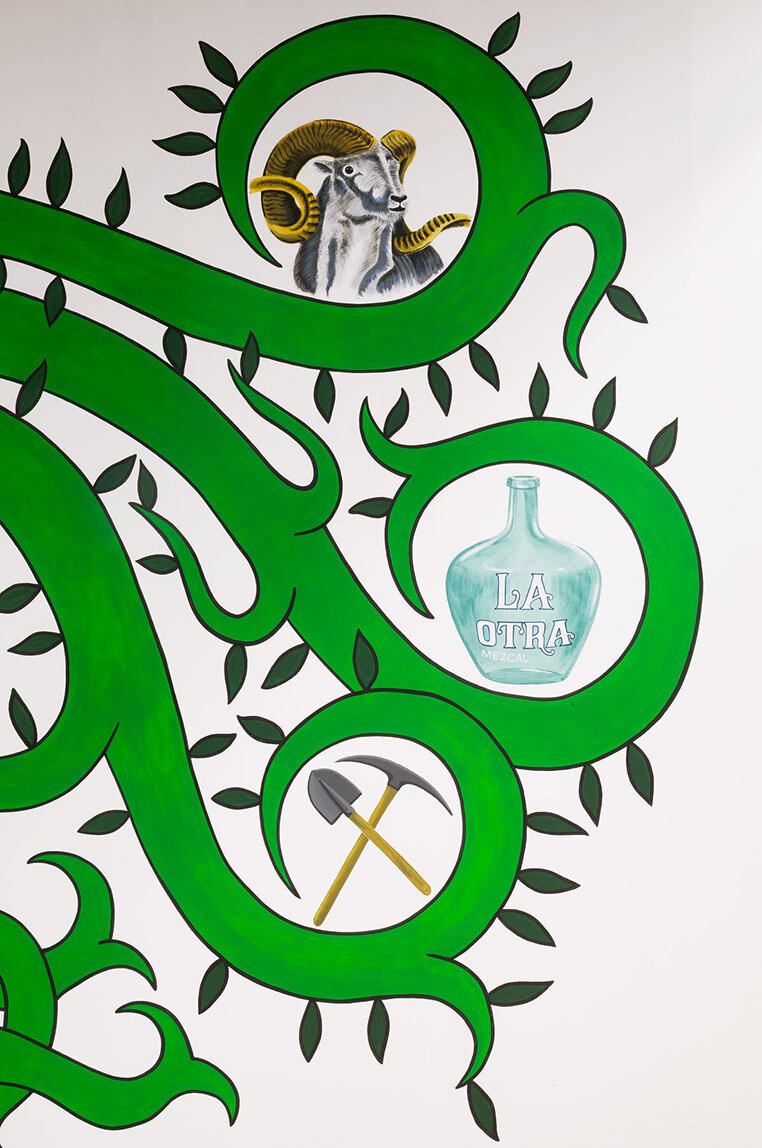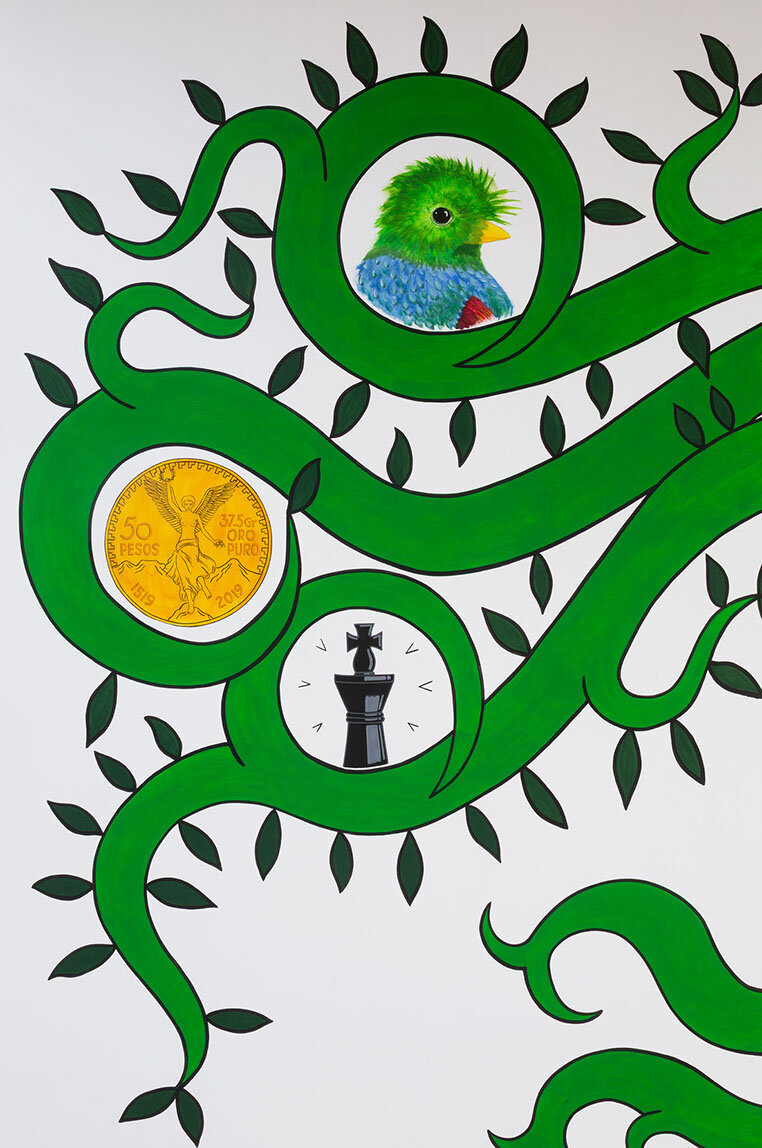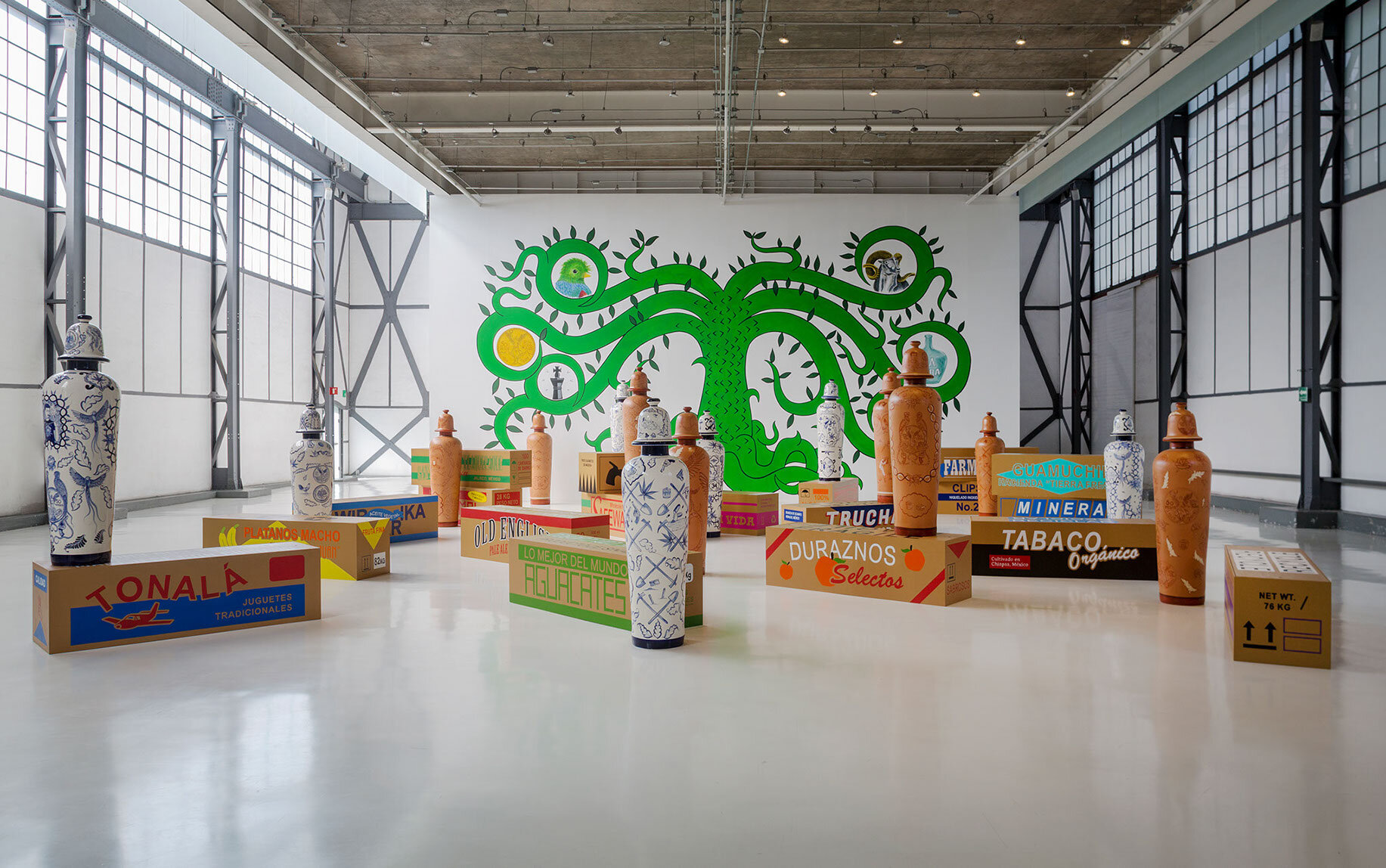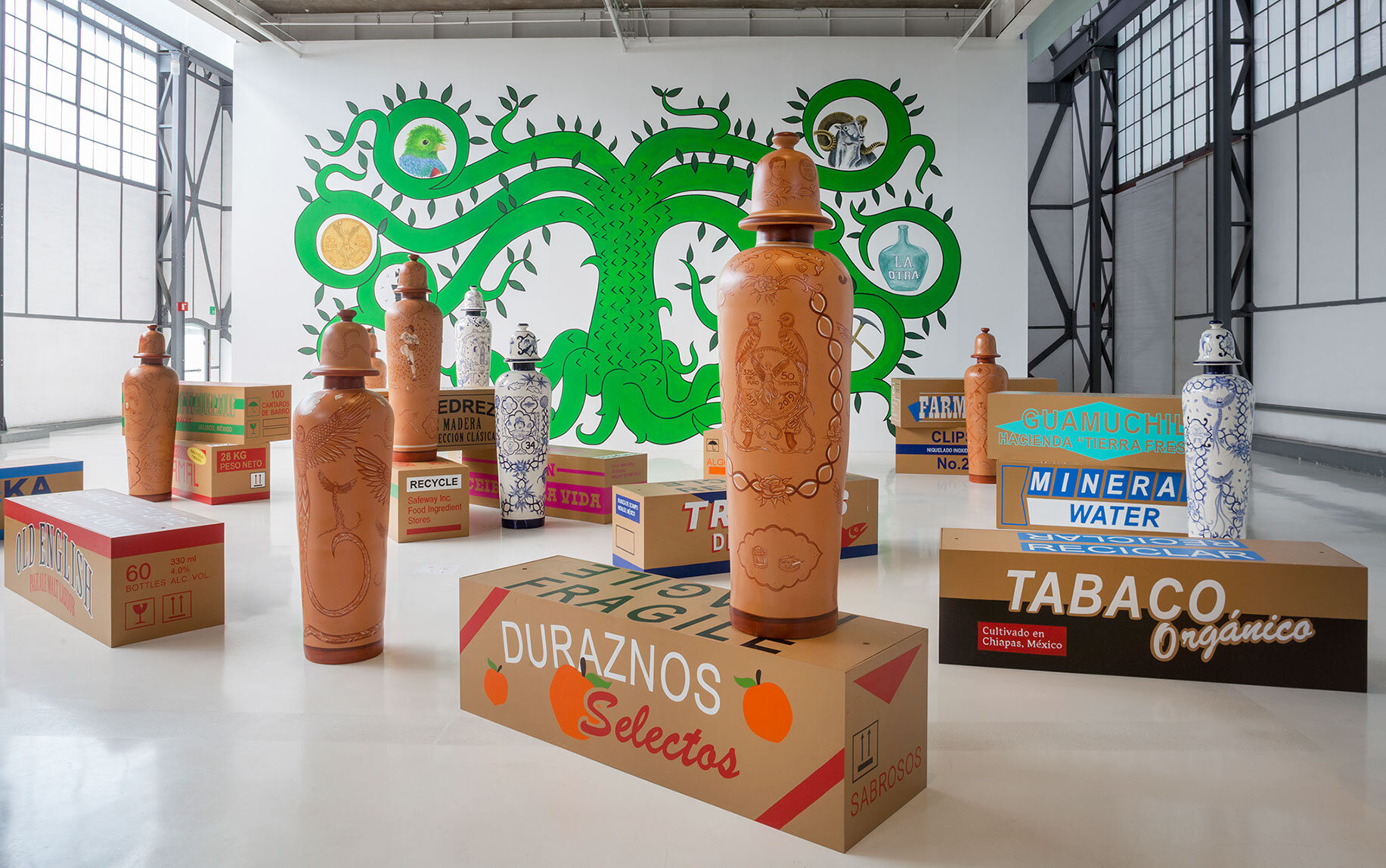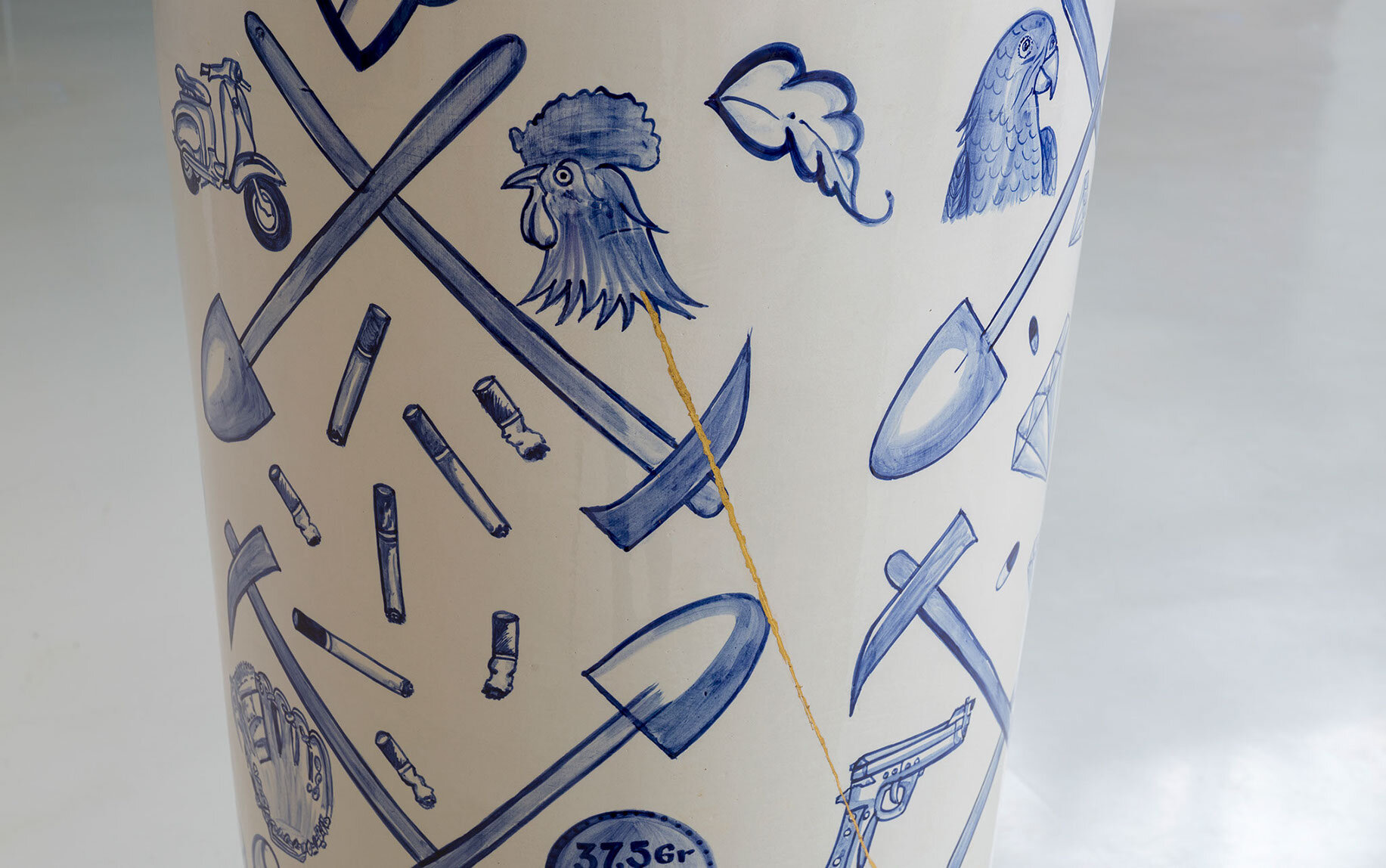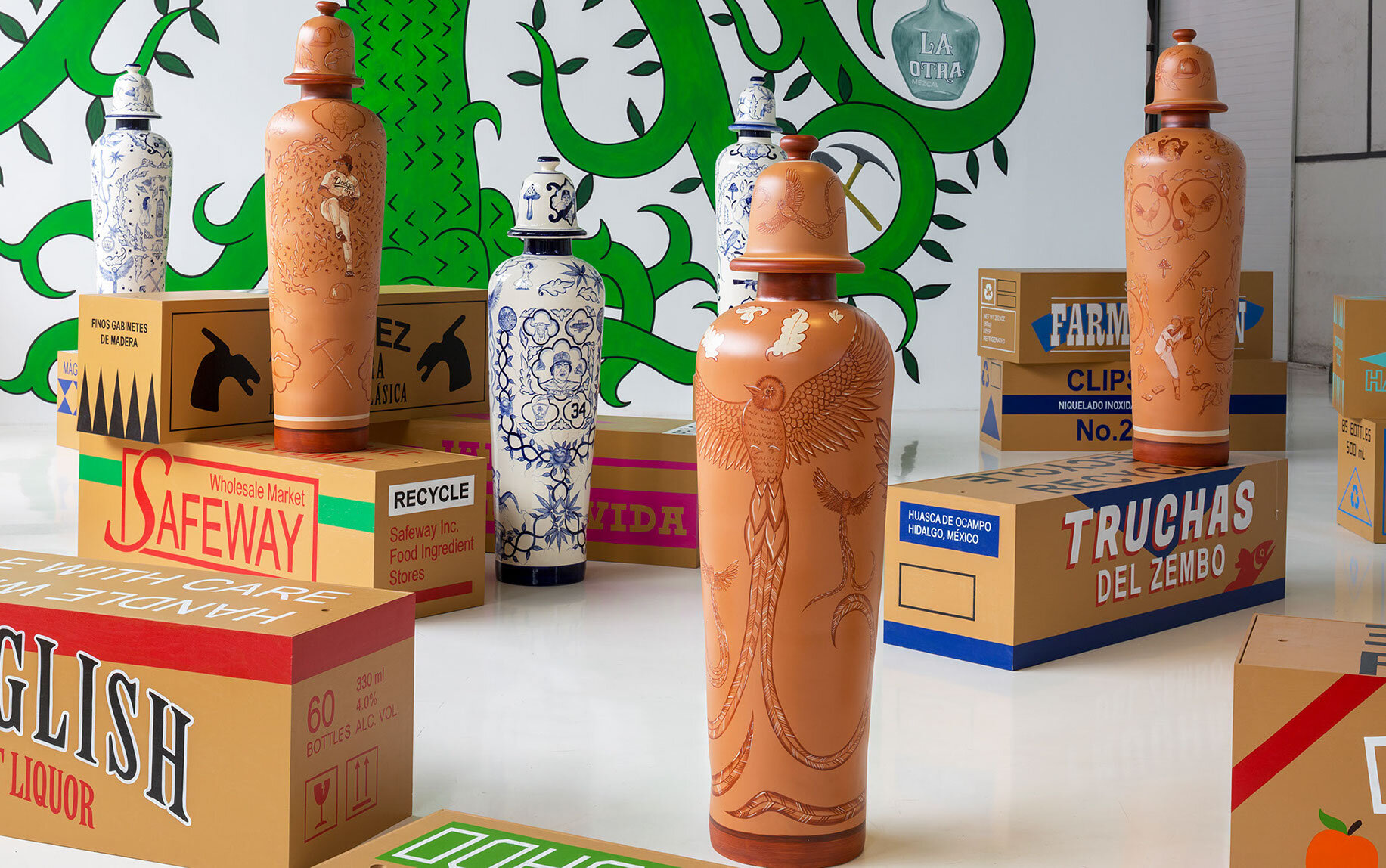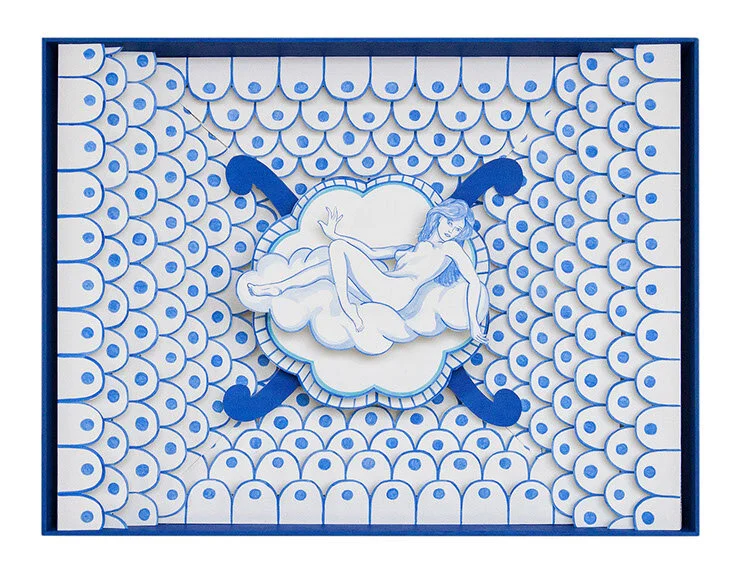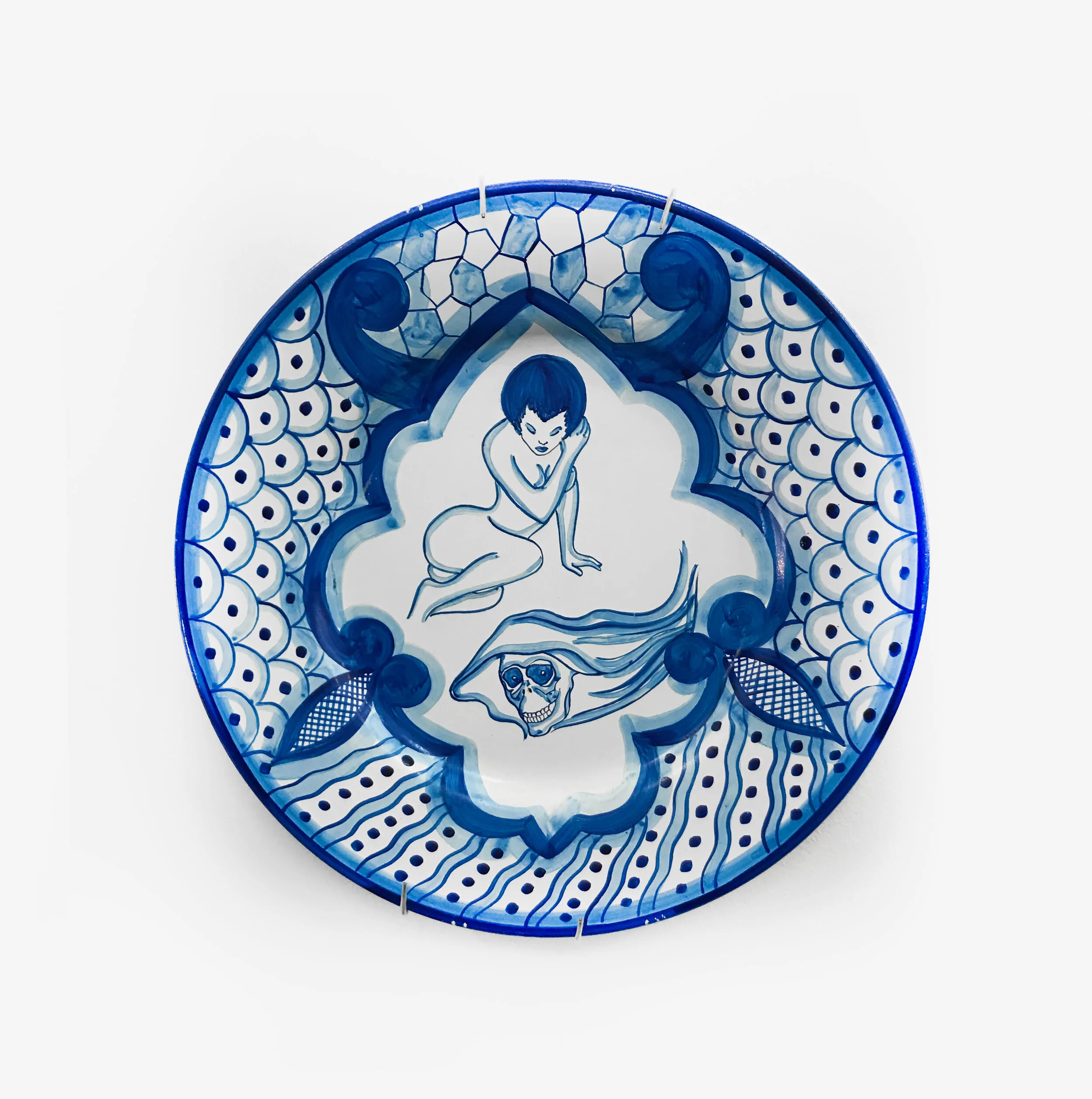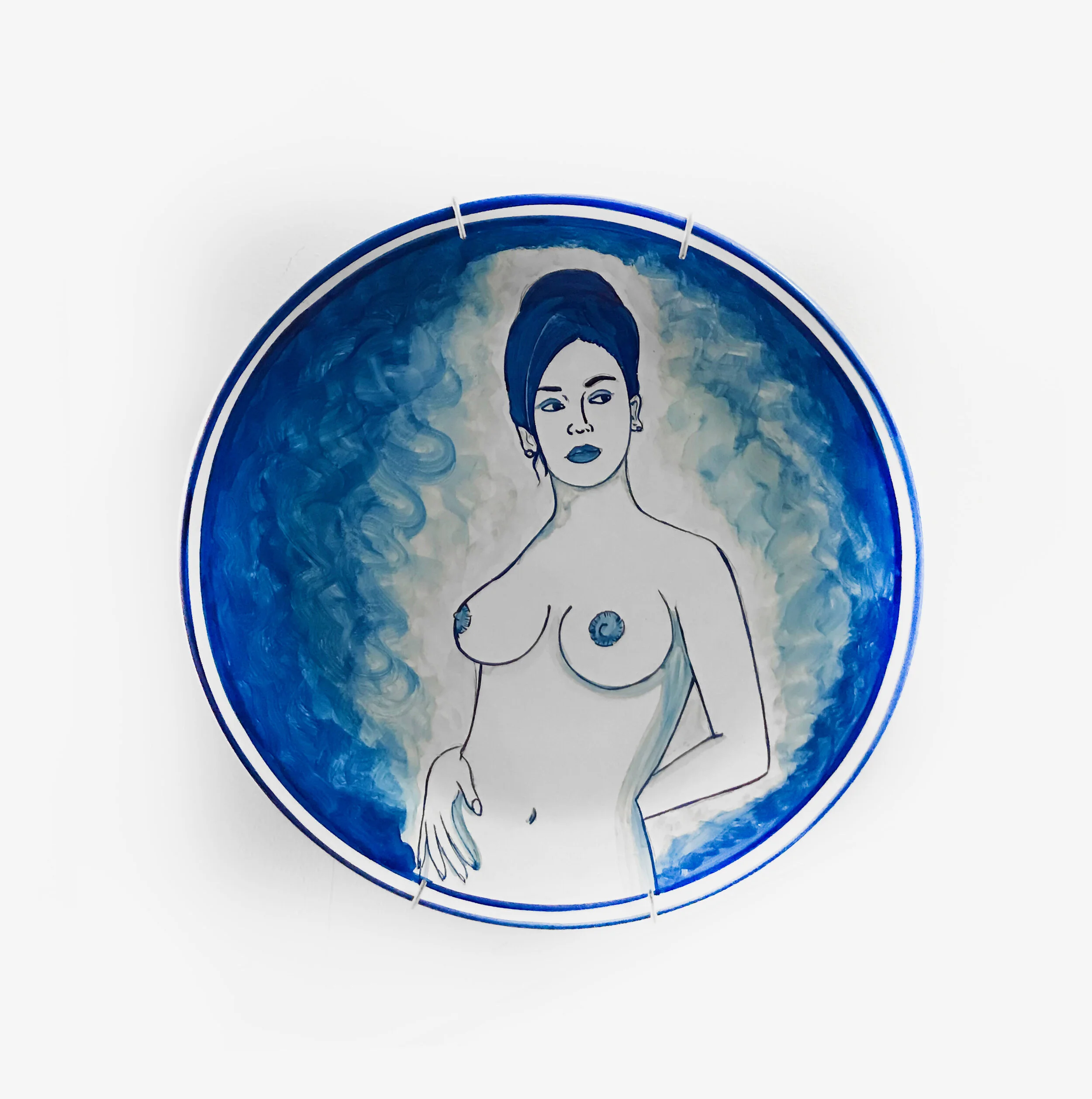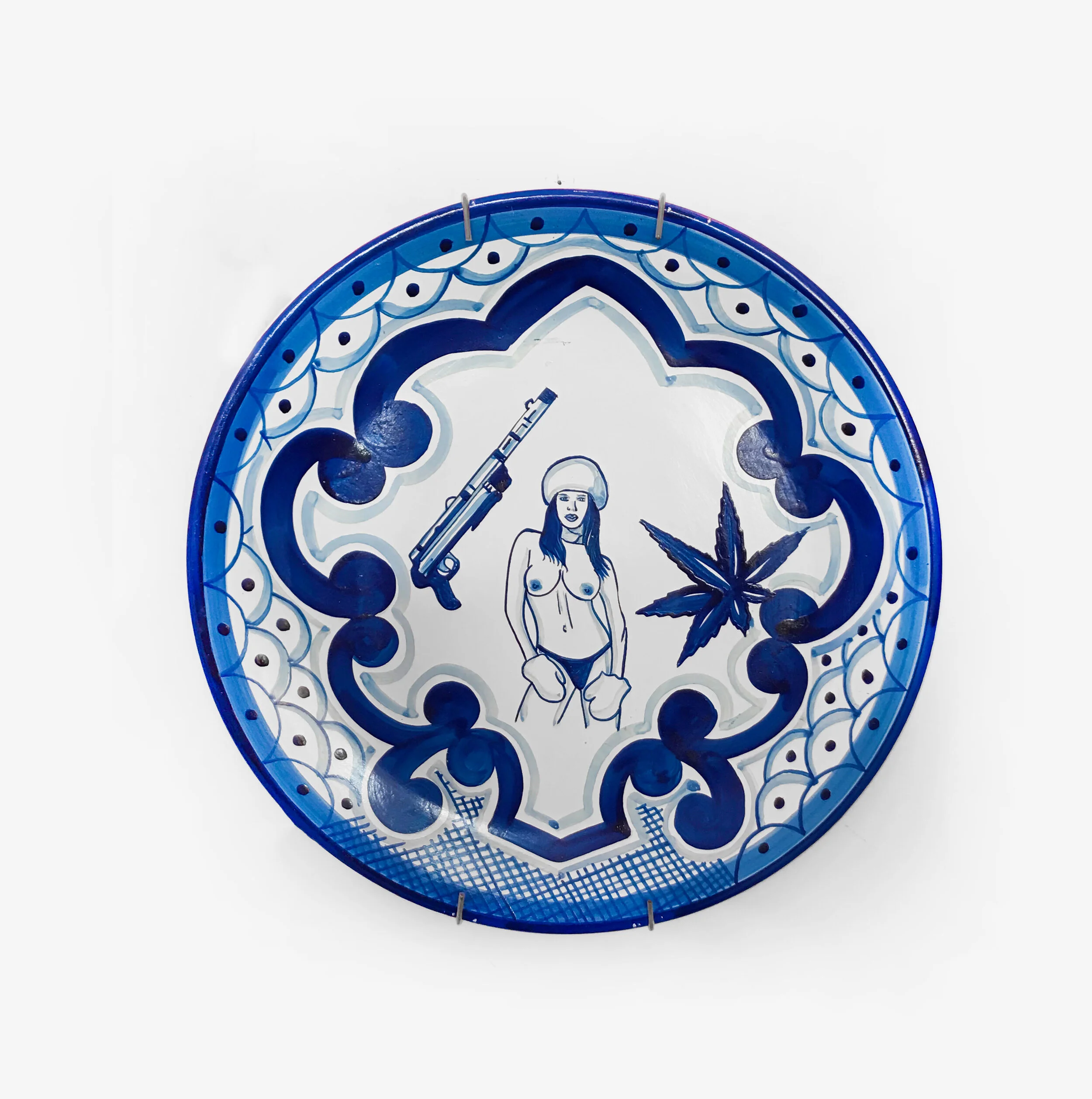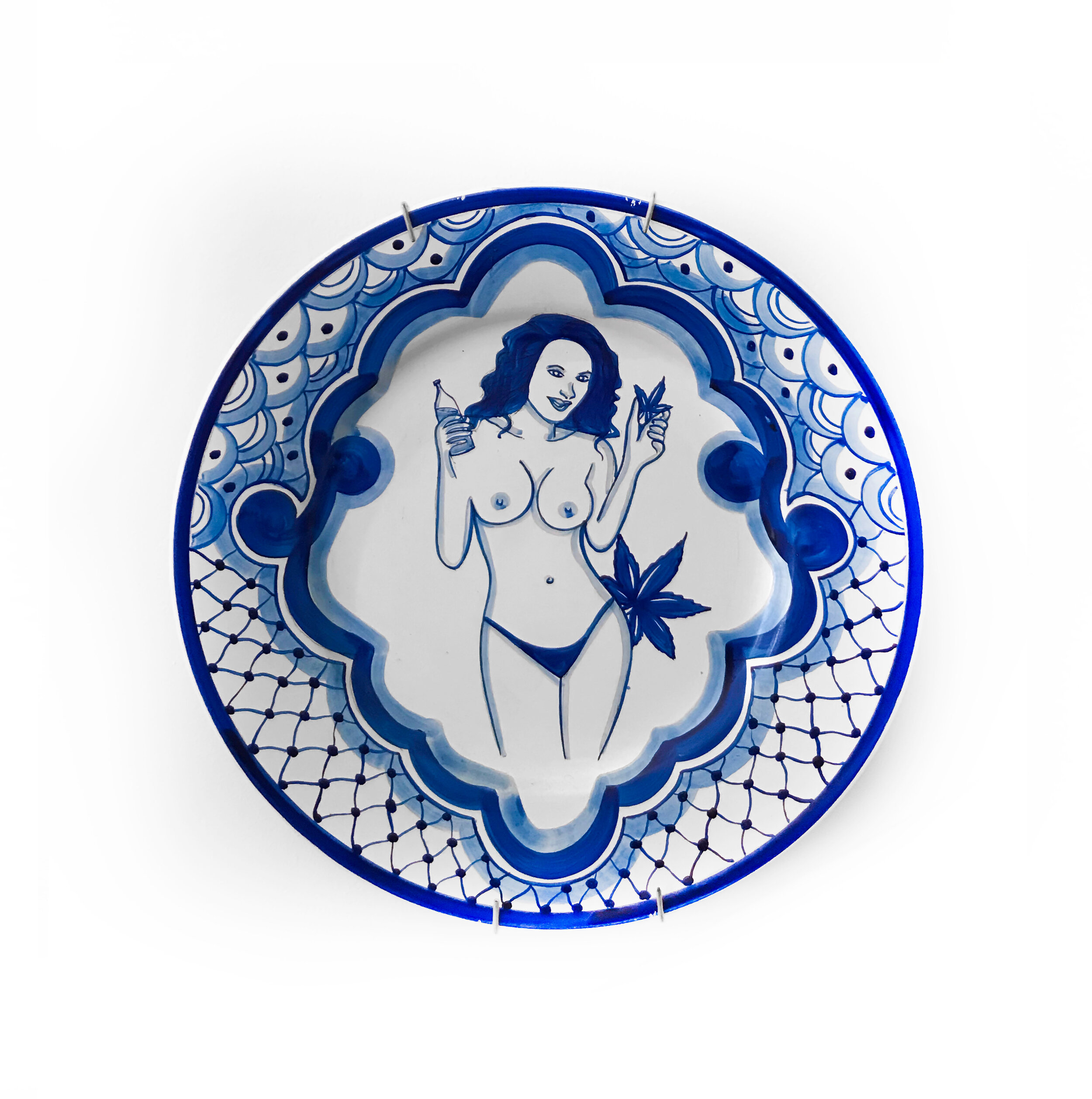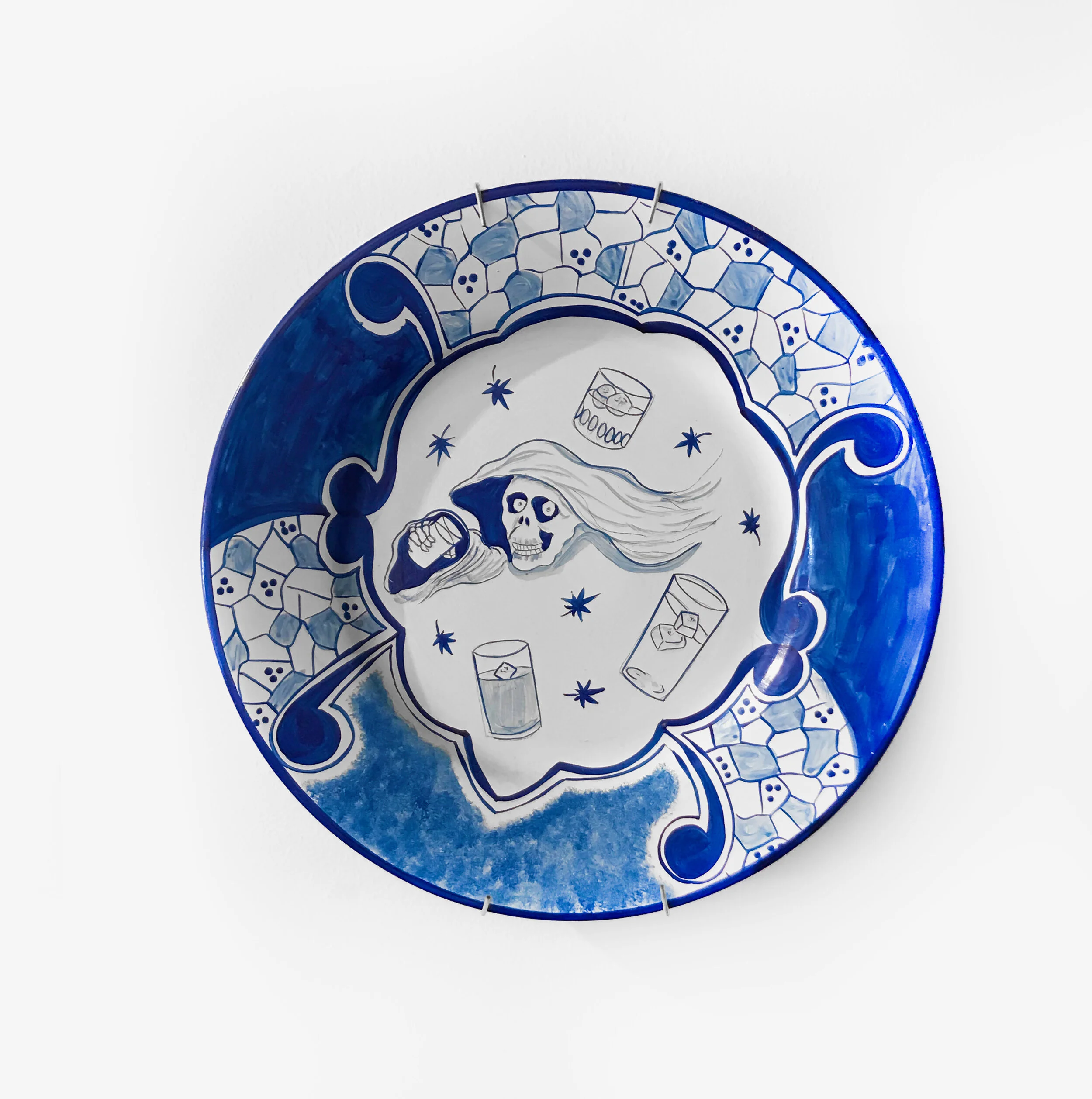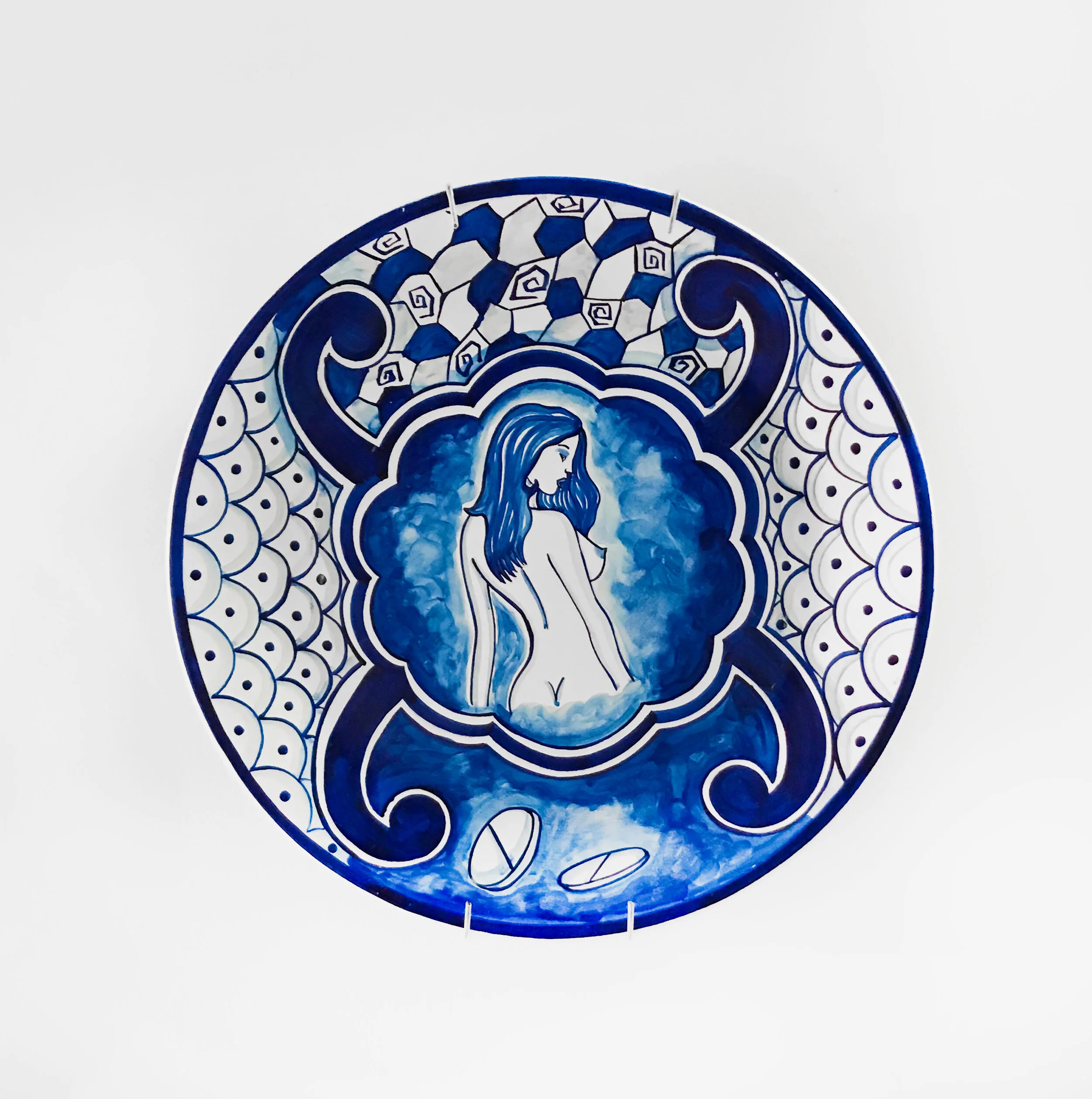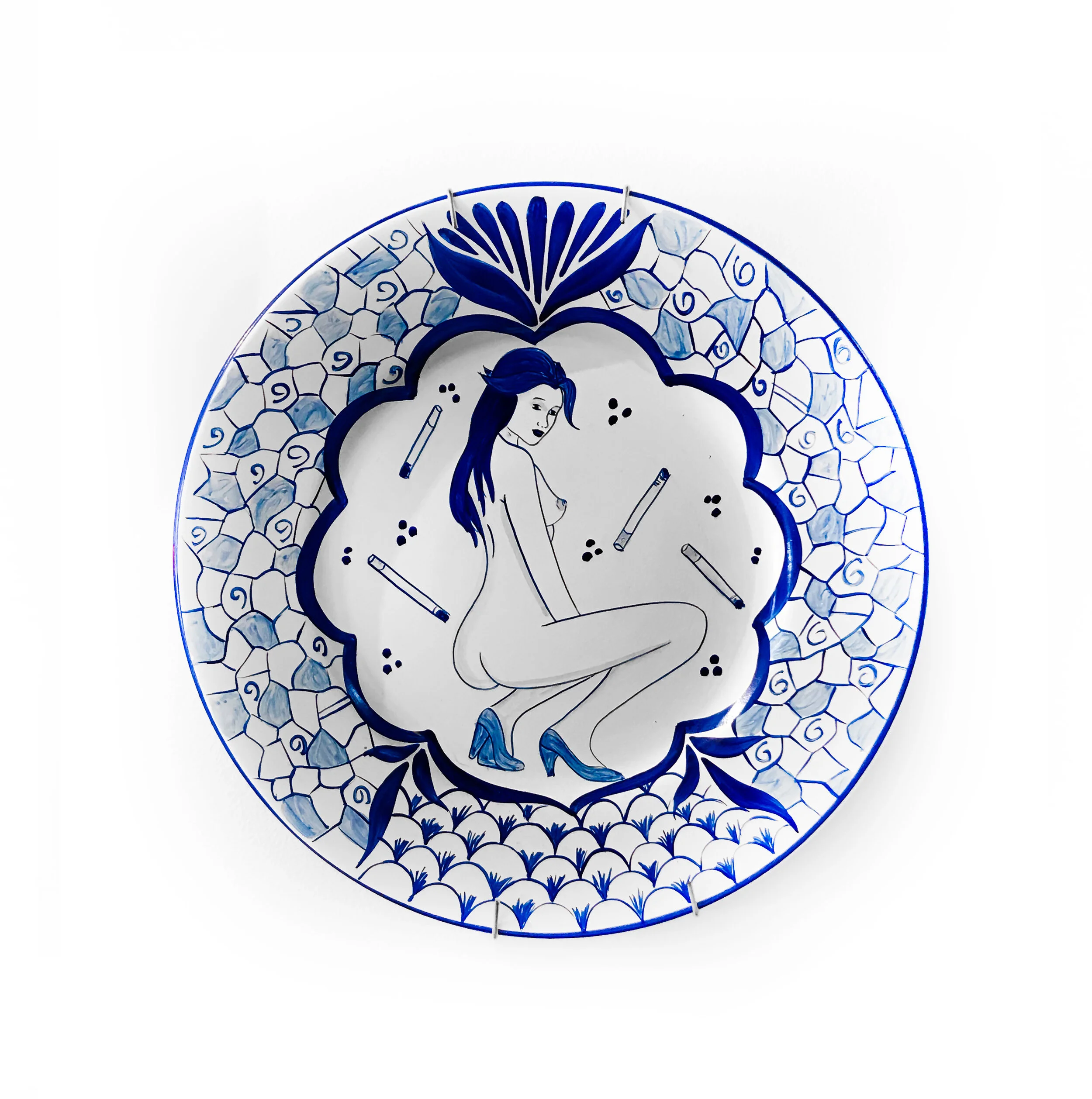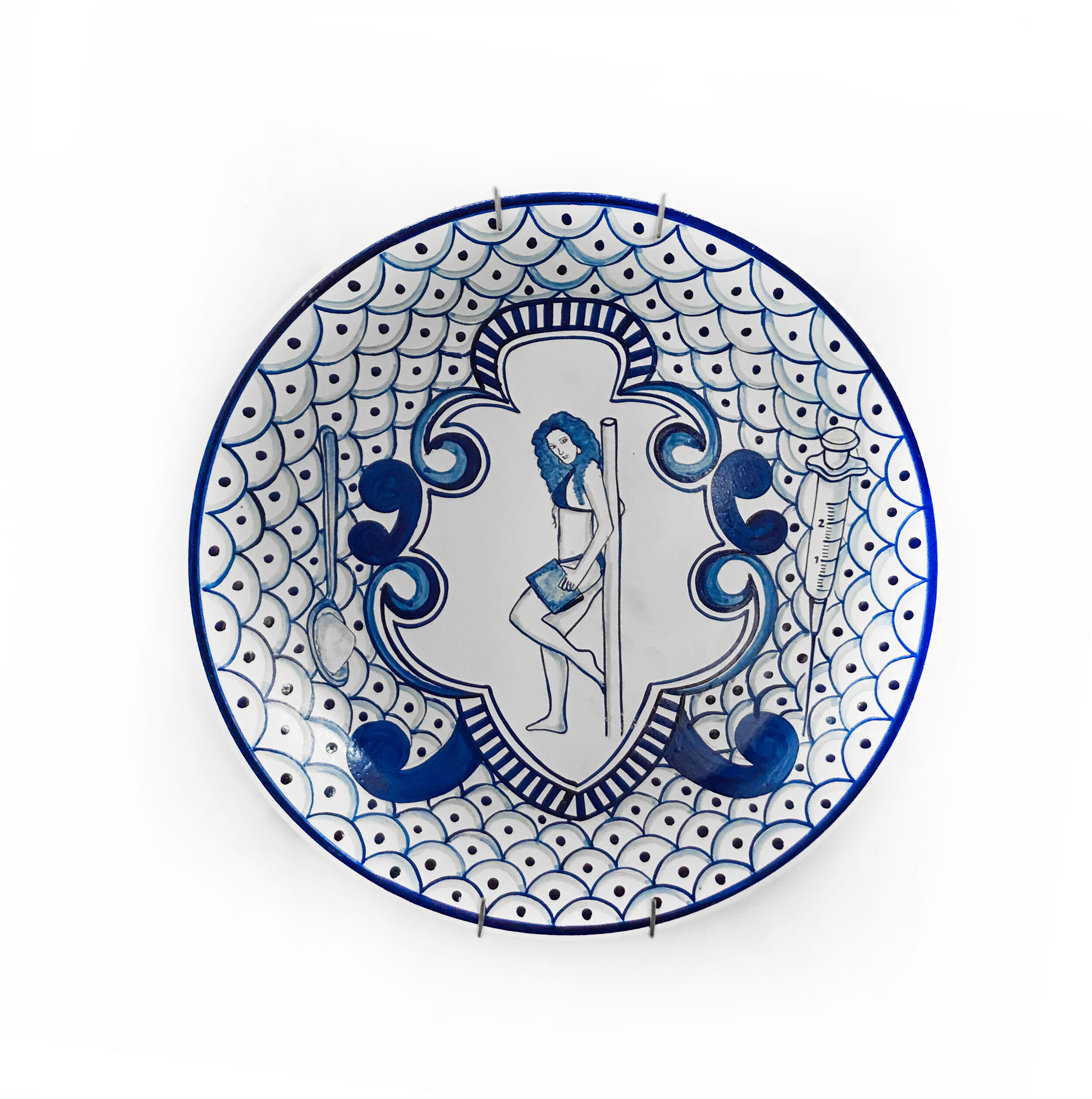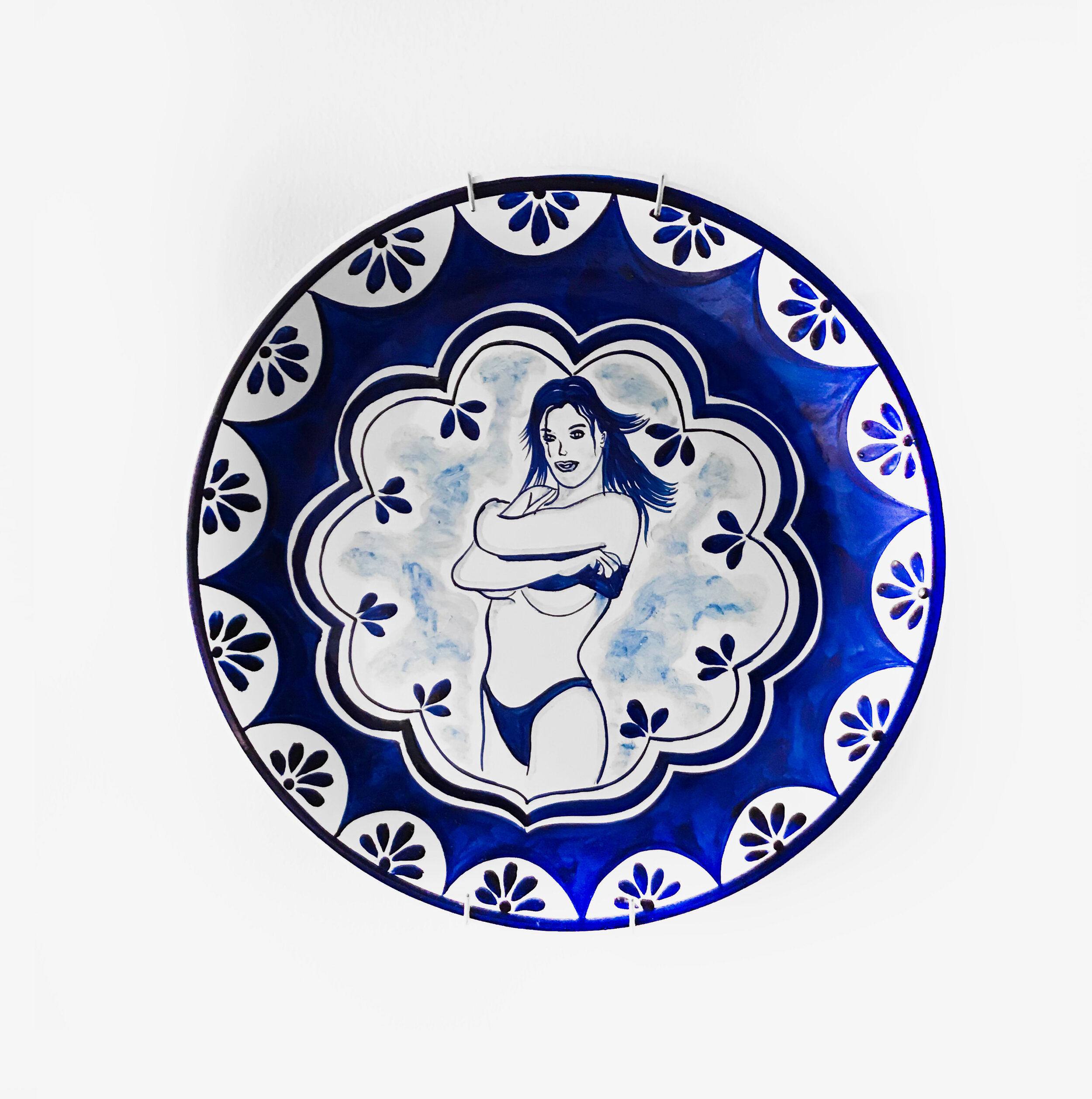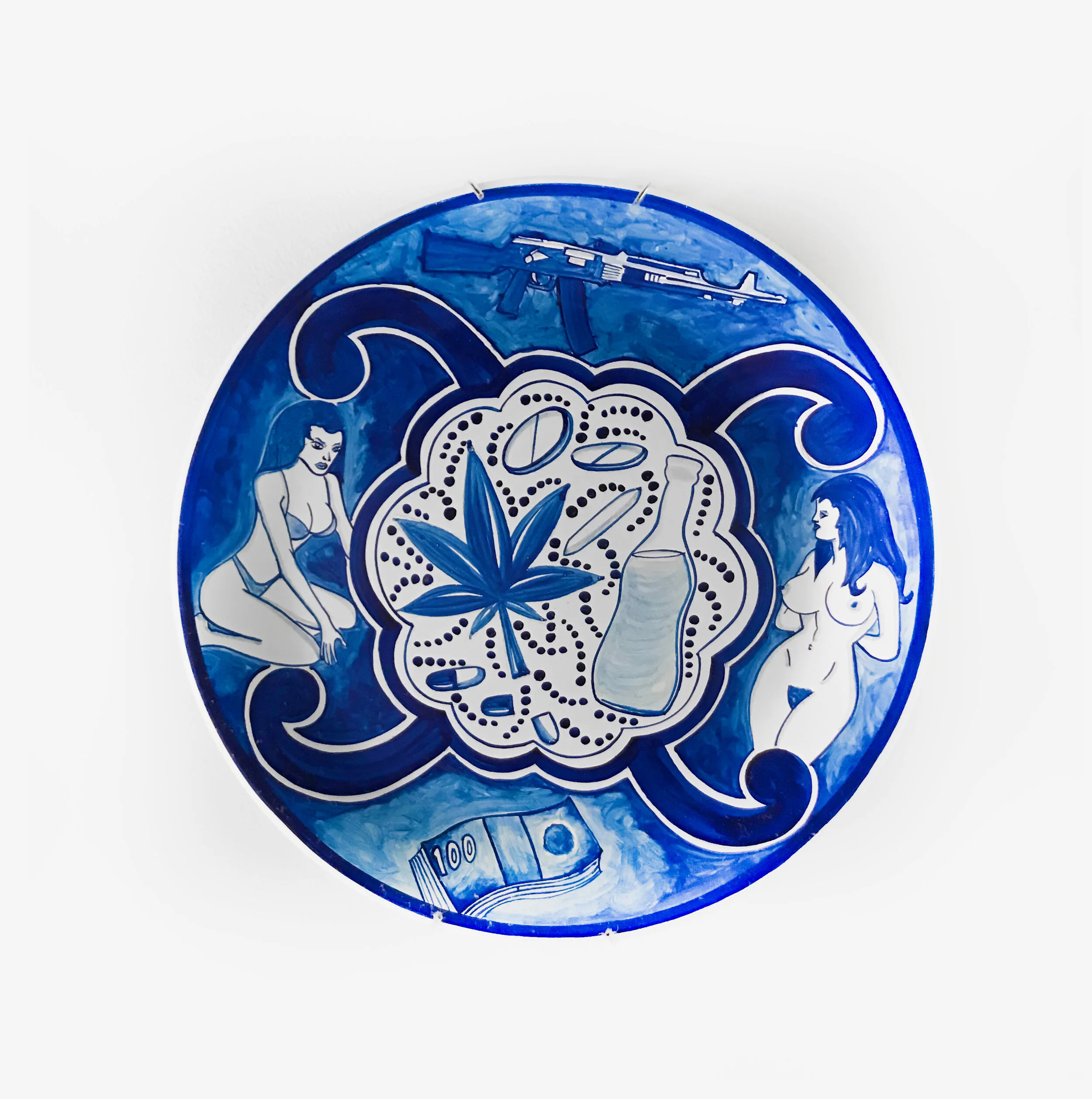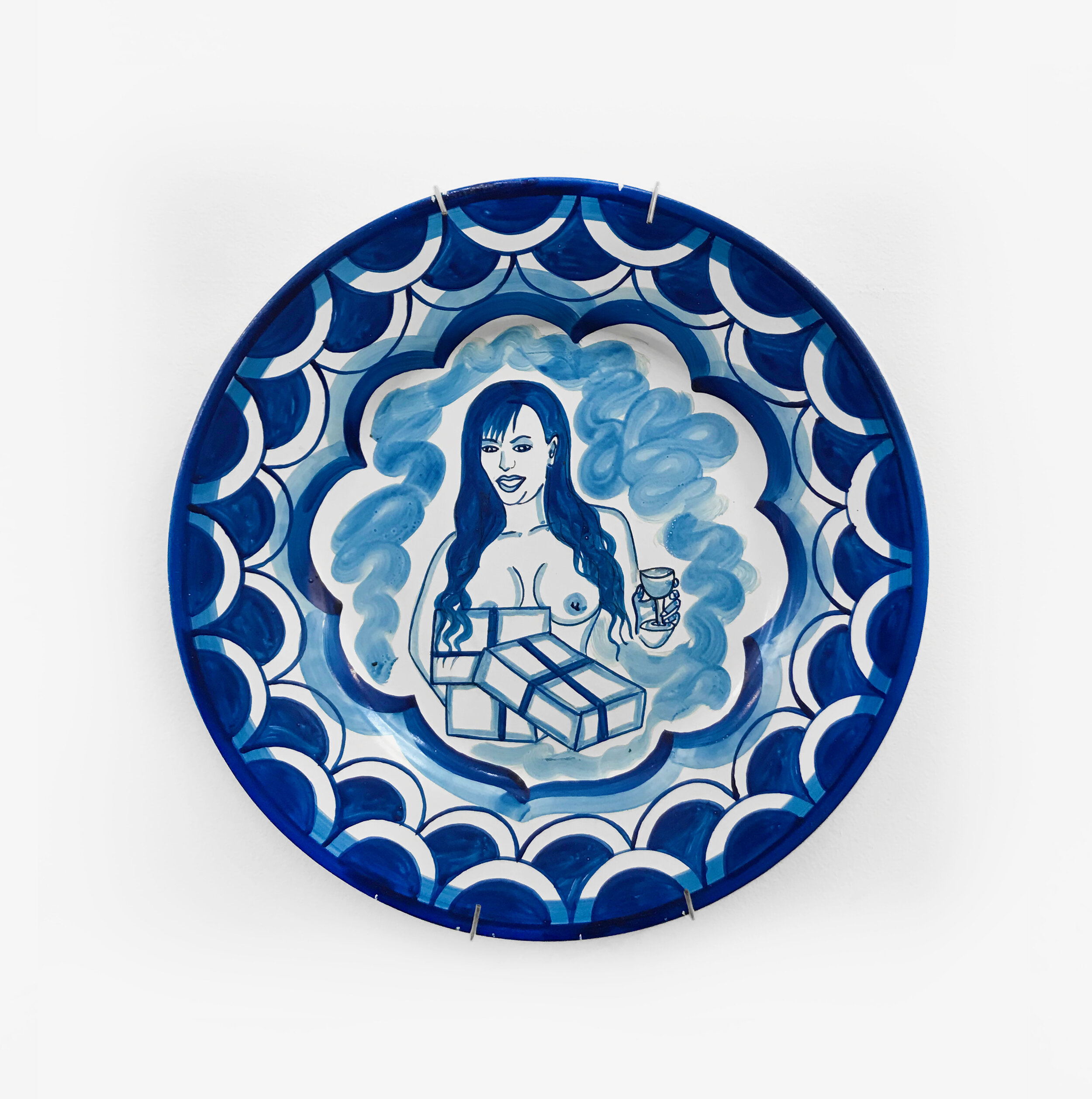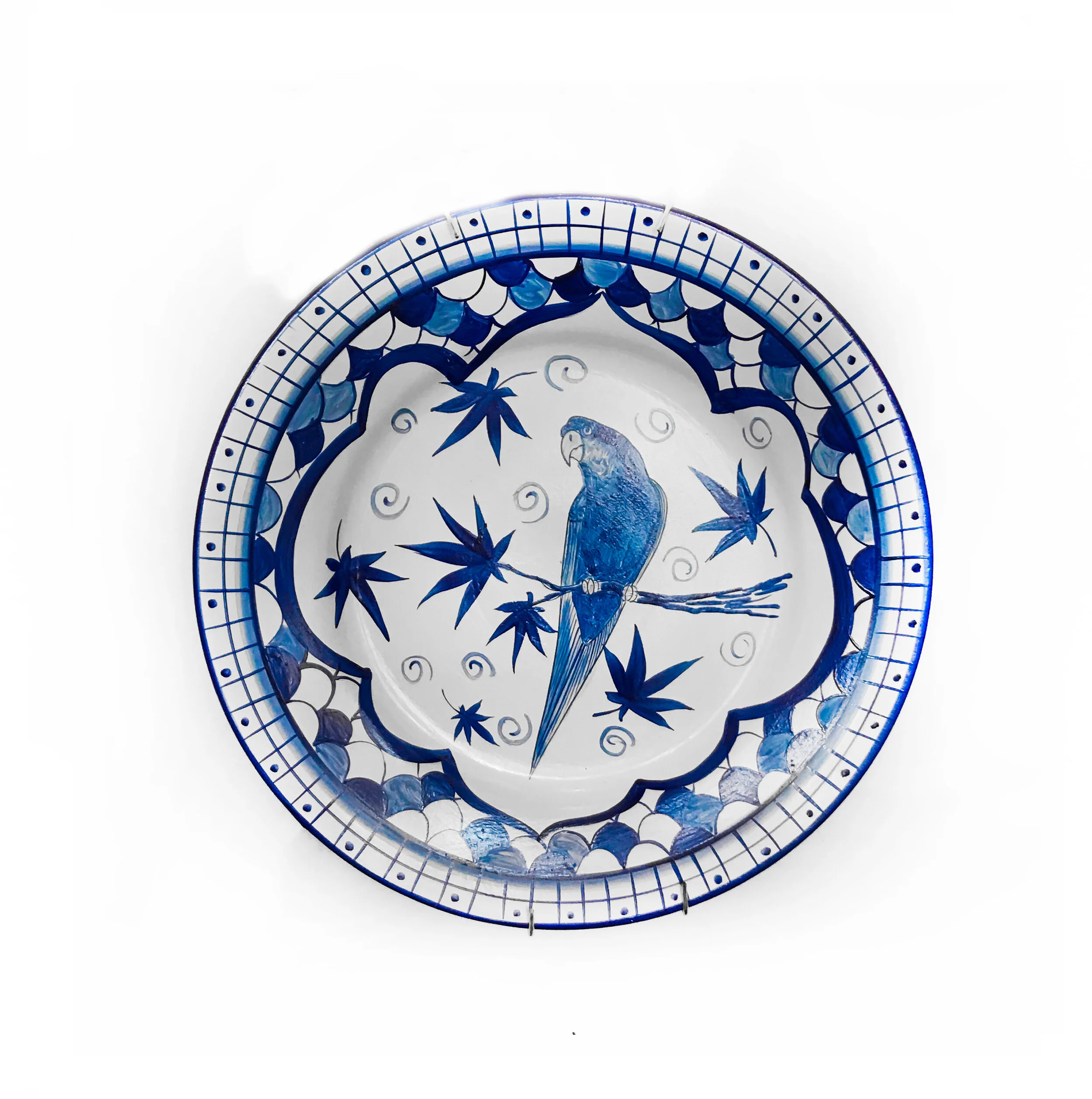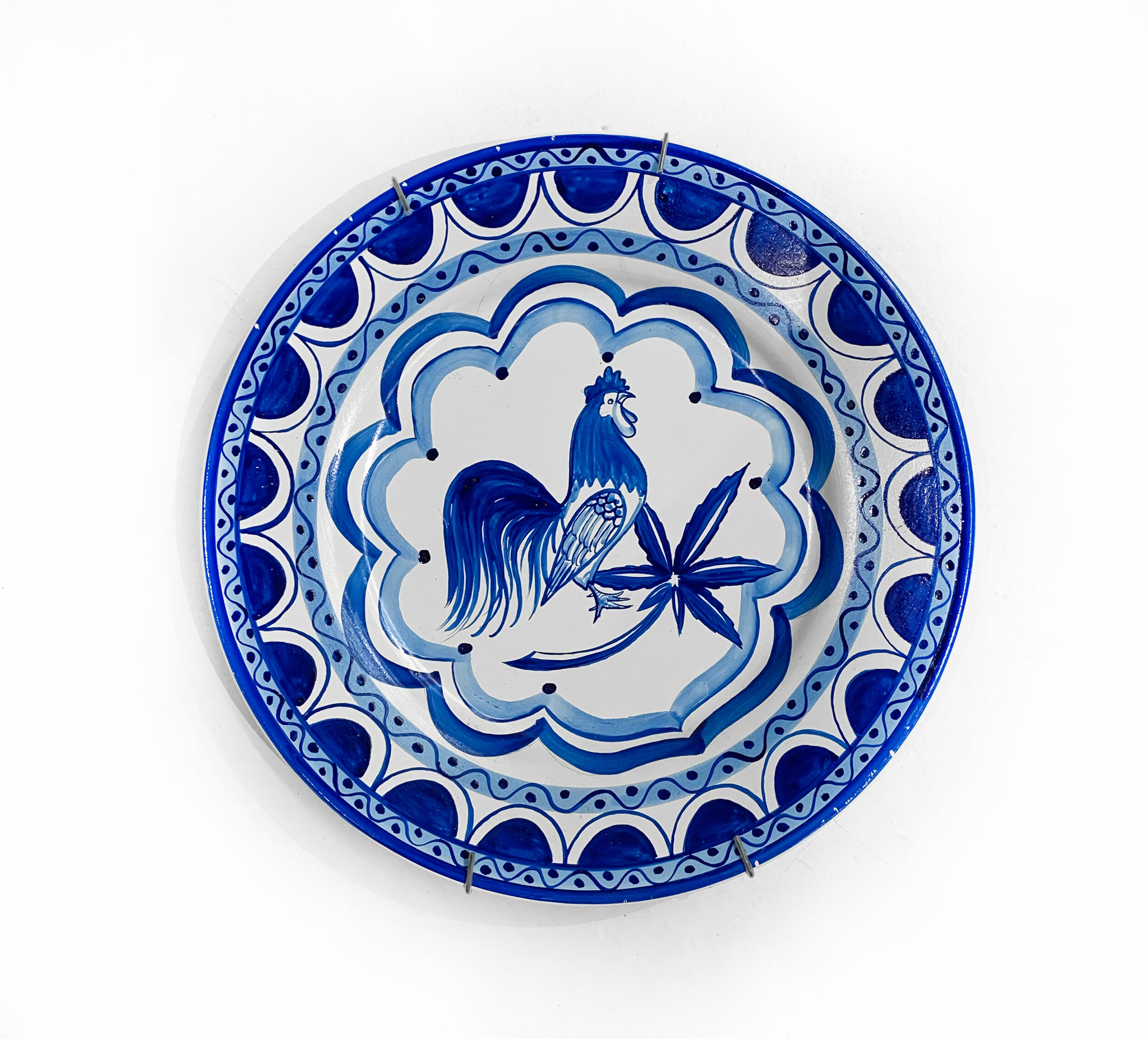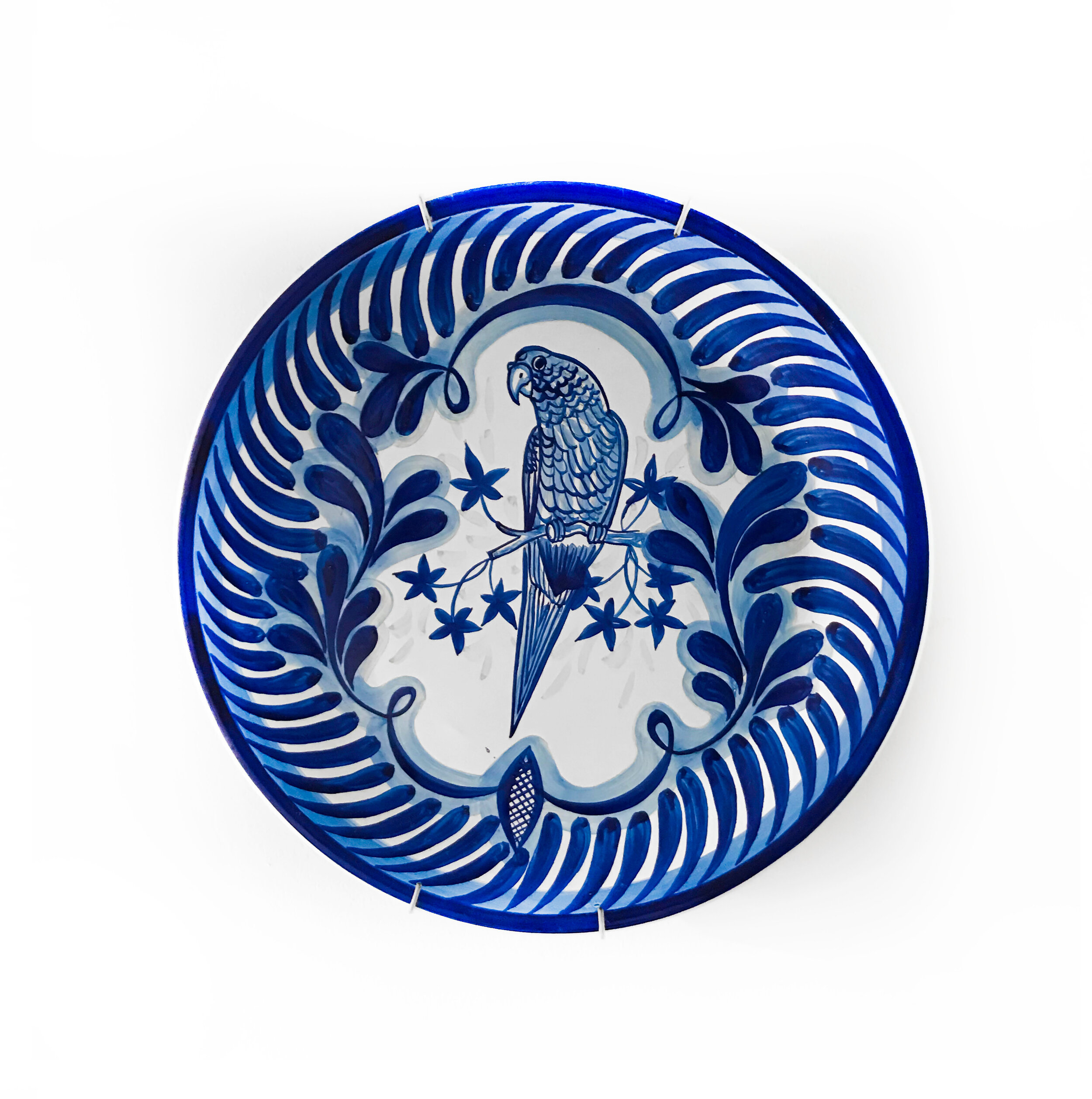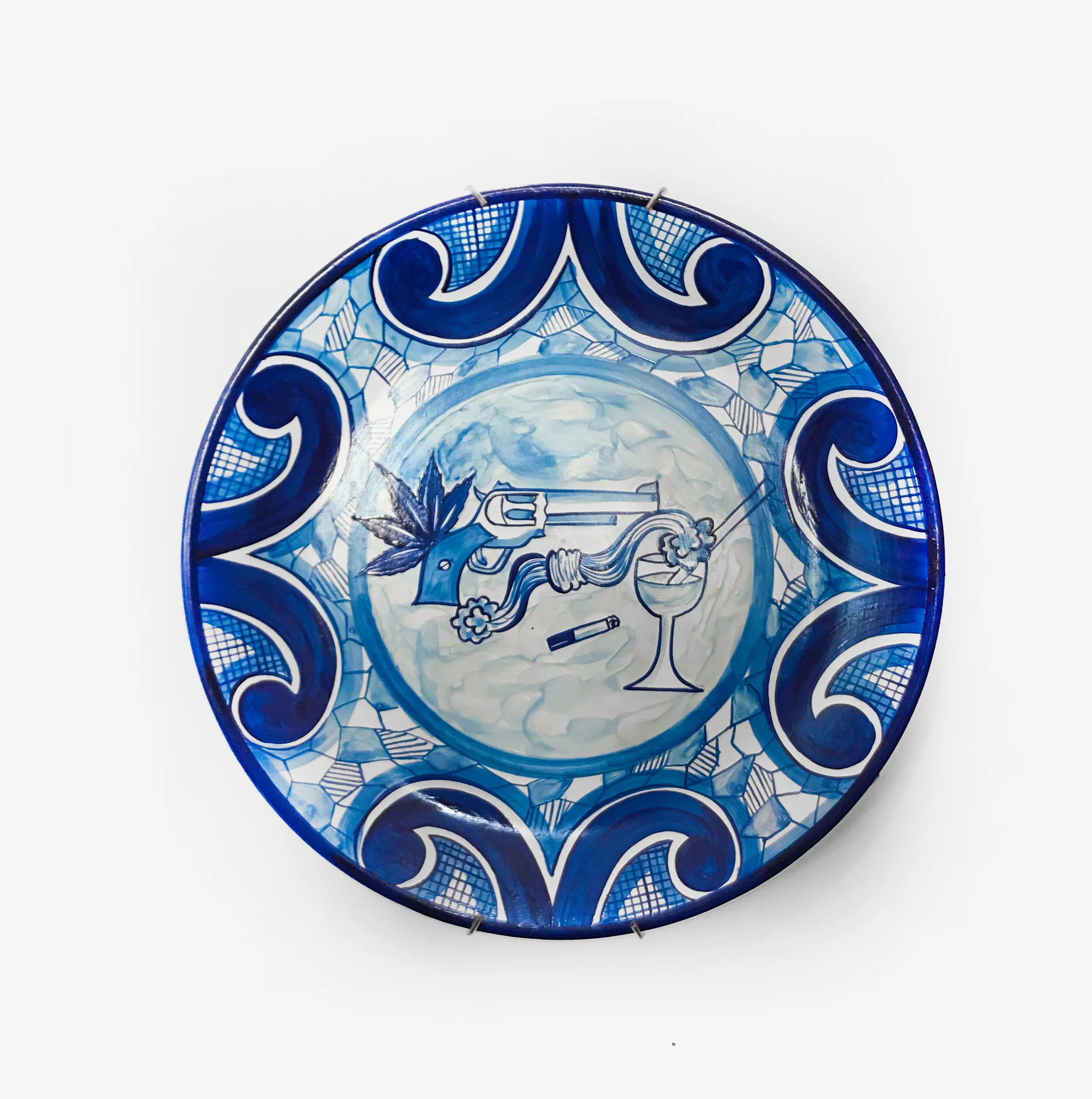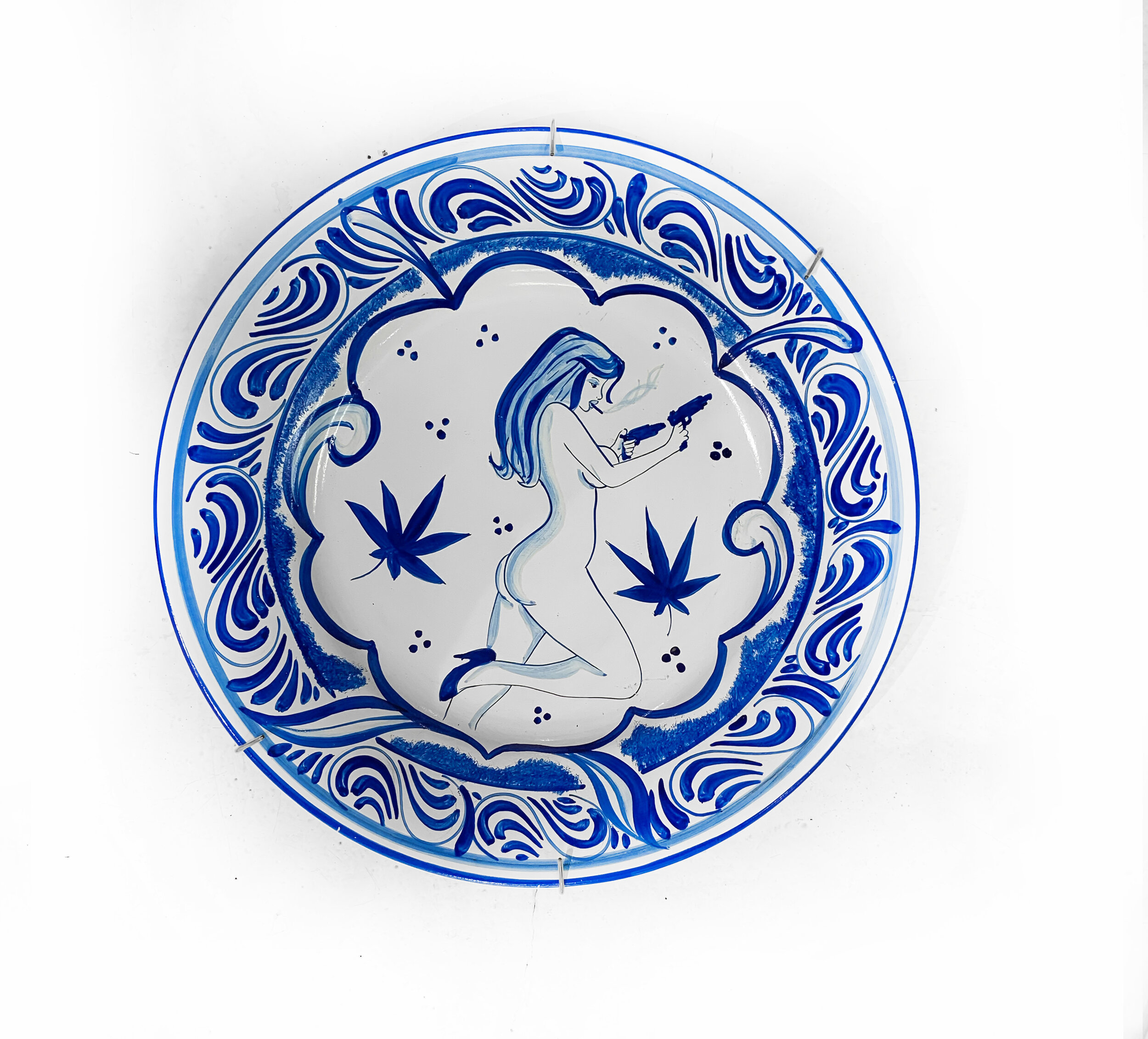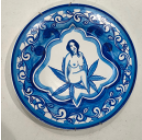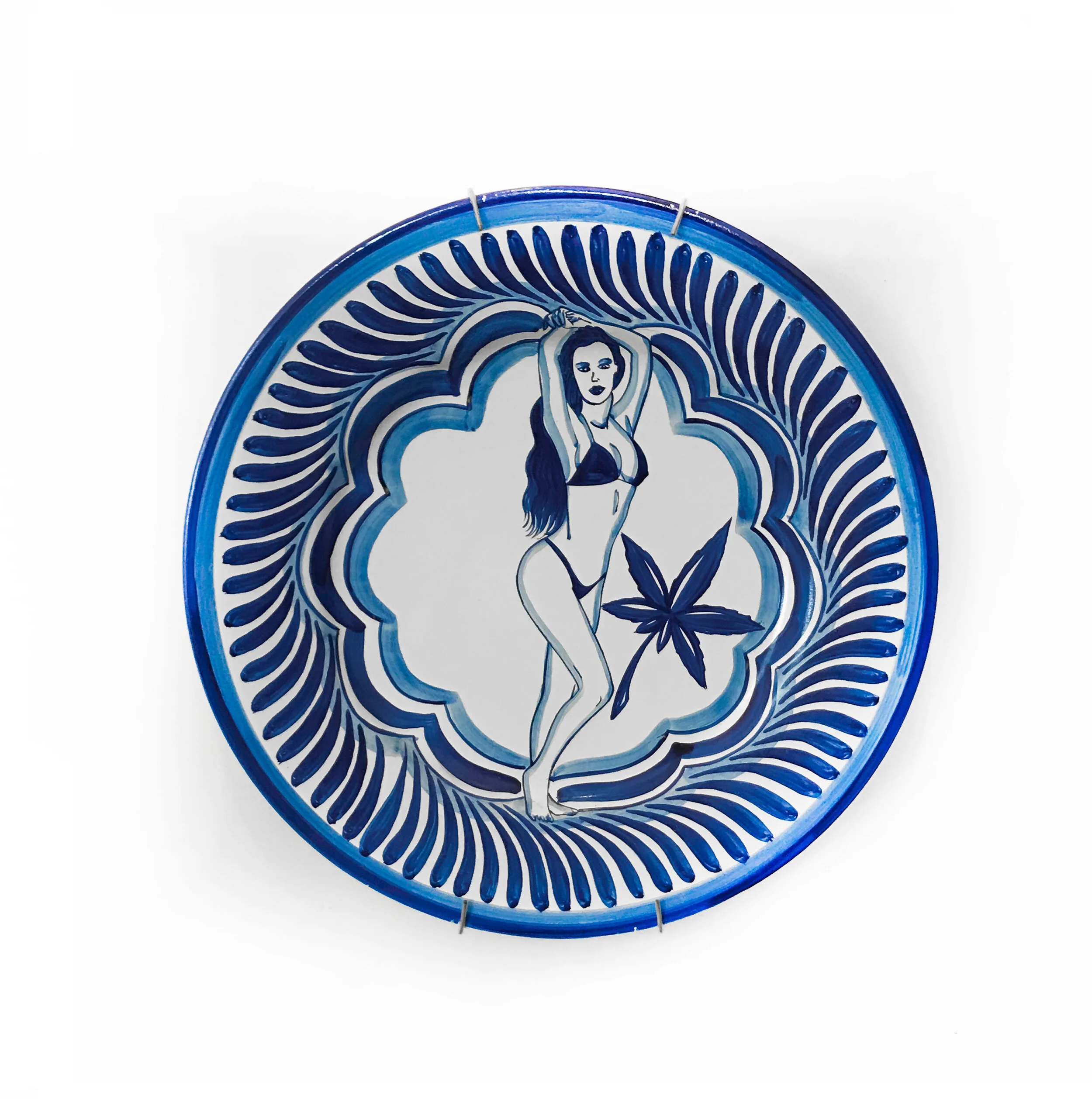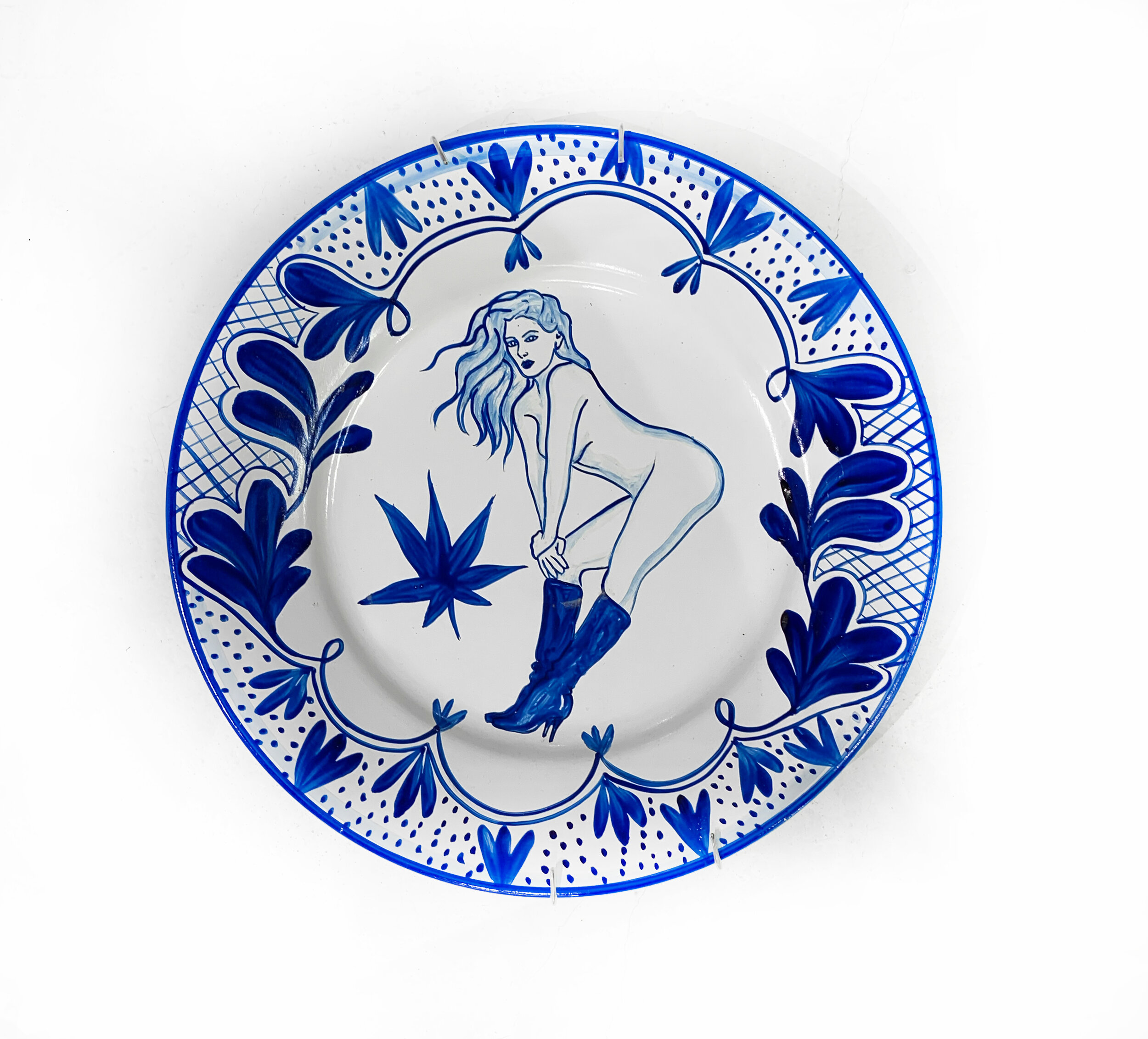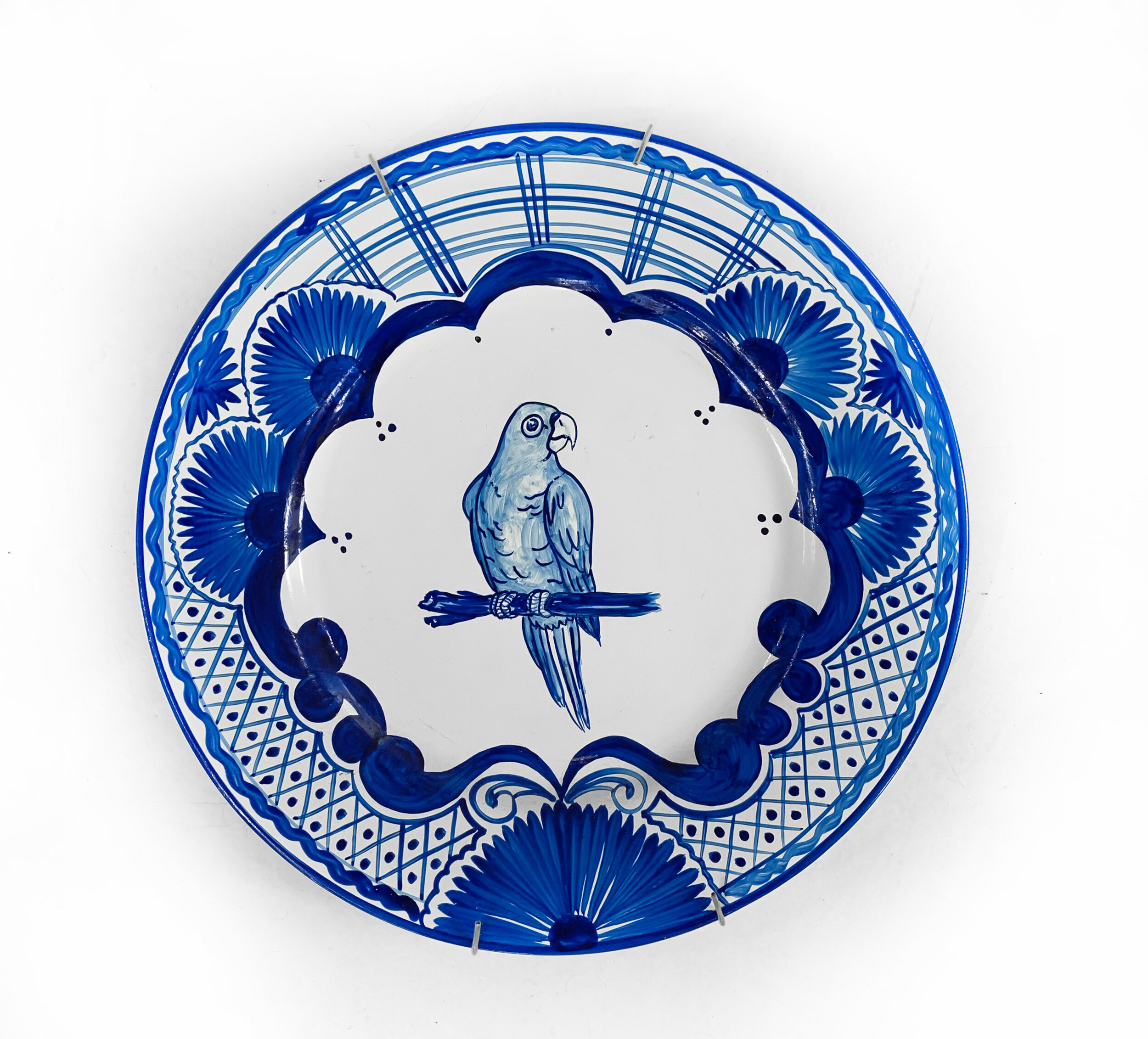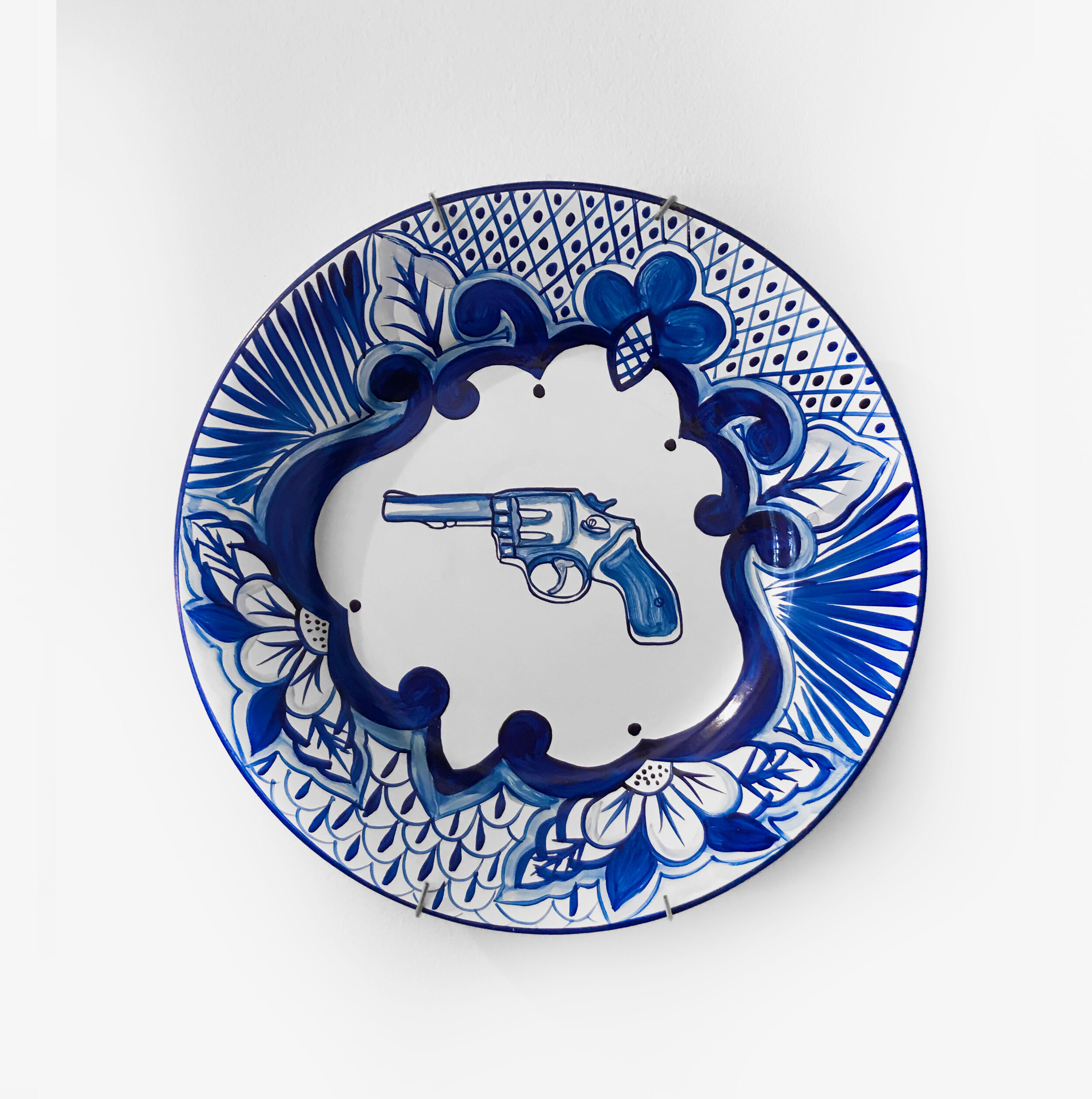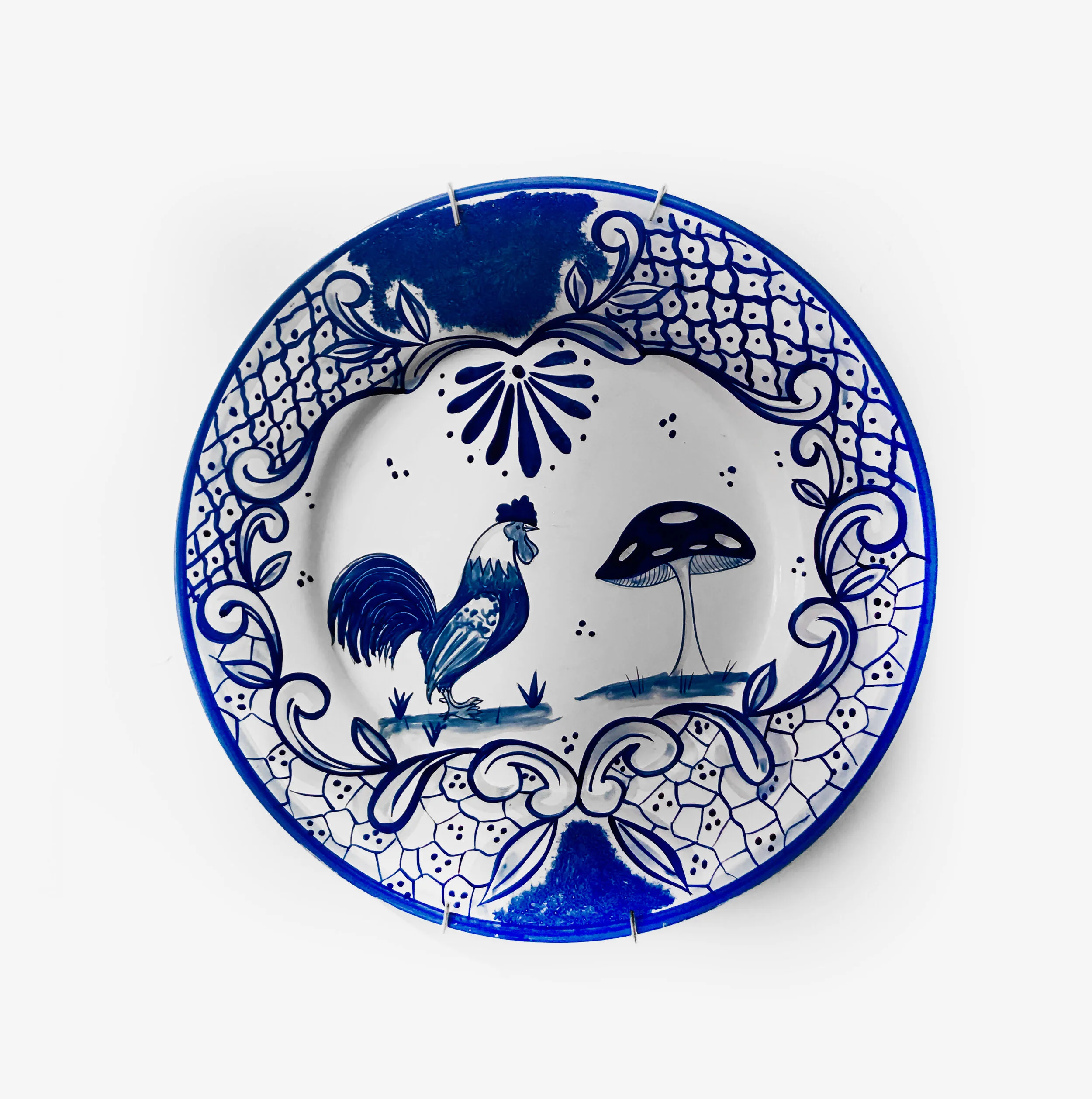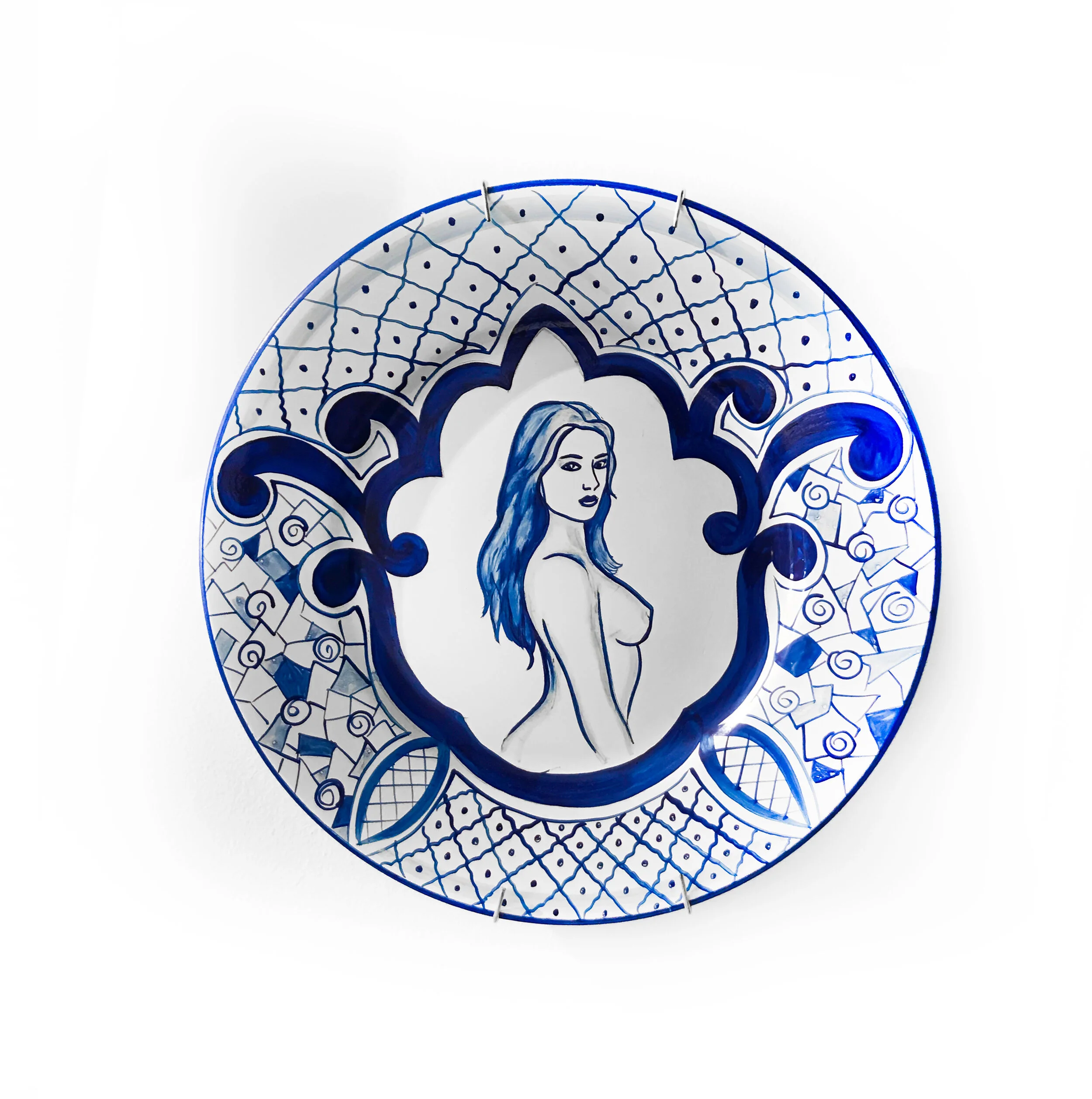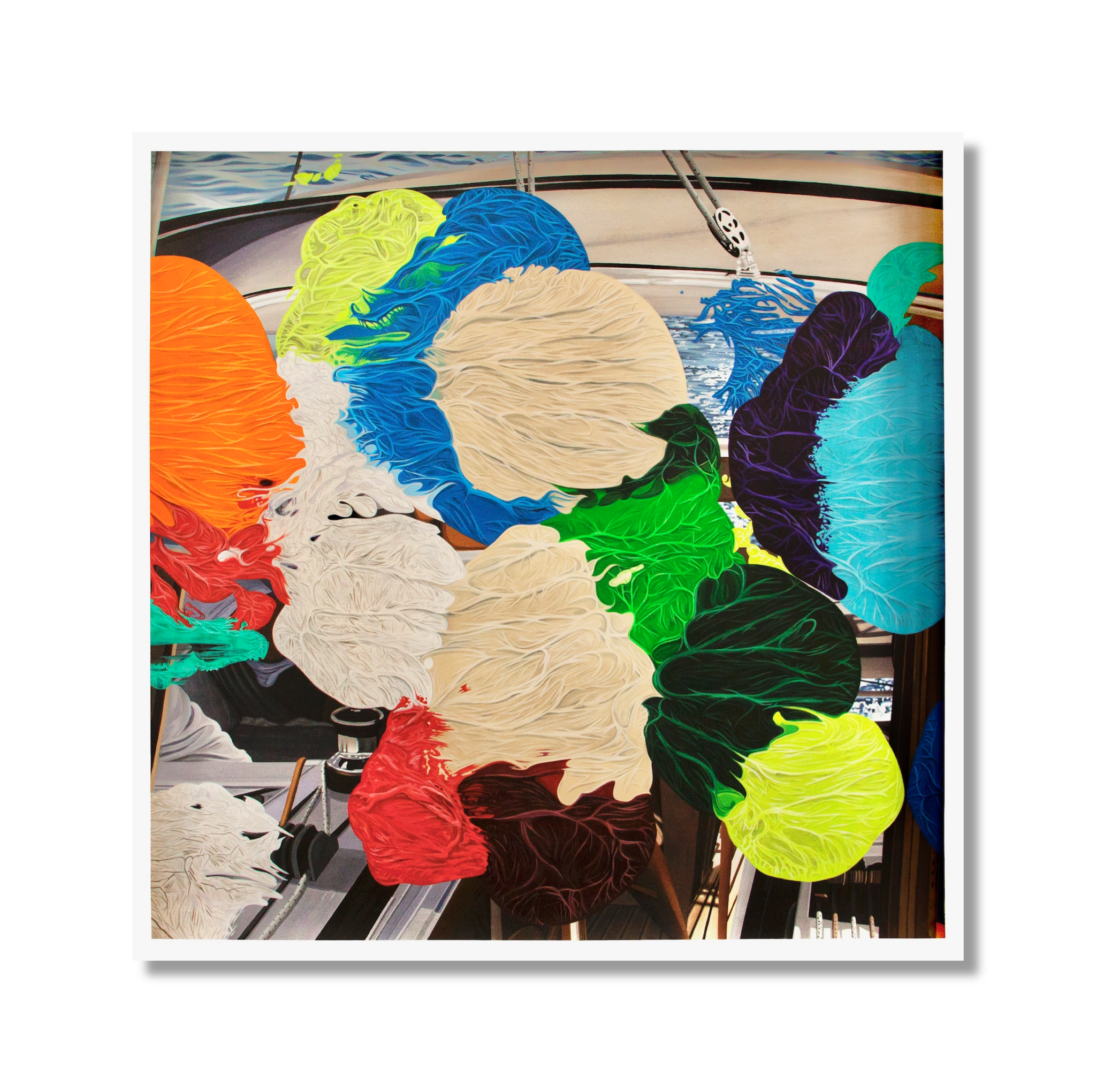Eduardo Sarabia
(B. 1976)
Eduardo Sarabia at his studio in Zapopan, Mexico.
Eduardo Sarabia’s work has been inspired by the independent economies and folk history of northern Mexico.
He frequently works with the materials favored by local craftspeople, using ceramic tiles, hand-woven textiles, and glass to create sculptures and installations that address the complex exchanges—social, cultural, and material—that occur when this region and its history encounters outsiders.
Without limiting himself to a critique of the “exoticization” of Mexican culture, Sarabia examines the gap separating definitions of taste (and, more bluntly, of legality). Mixing romantic visual narratives in regards to illegal matter, fine arts and commerce, creating an environment that slips between the oneiric and the openly materialistic, Sarabia’s work takes on an important exploration of understanding the physical and human consequences of economic forces.
El Toro y Otros Relatos, 2019, Museo Universitario del Chopo UNAM. Mexico City, Mexico
“Working in this style in Mexico was really specific until I started showing the ceramics in other places, like Moscow, Istanbul, China, and Japan. Everyone seems to have some kind of history related to this blue-and-white pottery, so different countries have different connections to this blue-and-white style”
Ballads, 2015 Other Criteria, New York, NY.
Ballads, 2015 Other Criteria, New York, NY.
Eduardo is best known for his blue-and-white ceramics, based on typical talavera designs, which are traditional Mexican patterns that are used for pottery. In celebration of Mexican Independence Day, we are privileged to highlight Eduardo Sarabia’s brilliant works.
In his series, “History of the World” Sarabia works with the materials favored by local
craftspeople, using ceramic tiles, hand-woven textiles, and glass to create sculptures and installations that address the complex exchanges—social, cultural, and material—that occur when this region and its history encounters outsiders.
Eduardo Sarabia’s Tainted features a series of paintings of everyday images covered with daubs of colored paint. The images, which appear to be family snapshots, often show people in the sunshine, near the water, looking as if they might be smiling for the camera.
However, it is impossible to tell for certain because the faces are obscured with swirls of paint. Interestingly, the clouds of paint covering the images somehow manage to be obstructive without being discordant. The color palette of the splotches matches that of the photos it obscures. They are paintings on paintings–illustrating the duality of reality and illusion–as relevant to life as it is to art.
Eduardo Sarabia, Monte Alban, circa 2014, 2017, Acrylic on paper. 2013 Museum of Contemporary Art Denver, CO. United States of America
Eduardo Sarabia, Happy, 2011. 2013 Museum of Contemporary Art
Denver, CO. United States of America
Book Your Appointment

